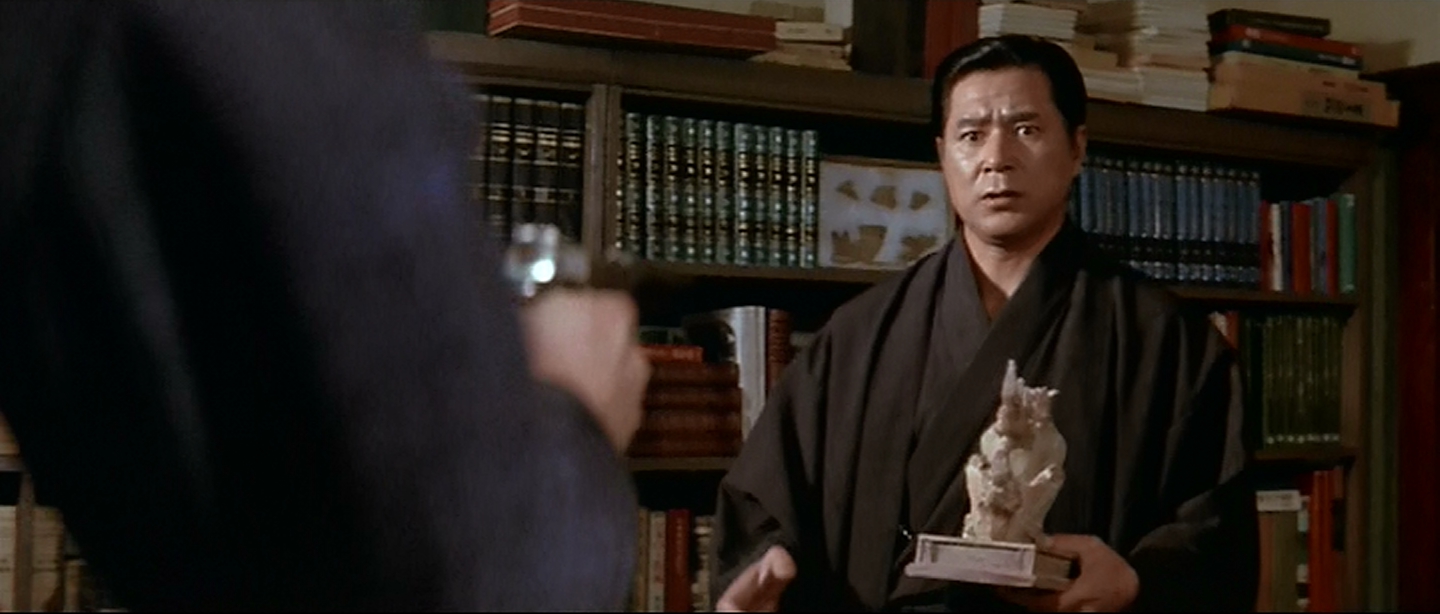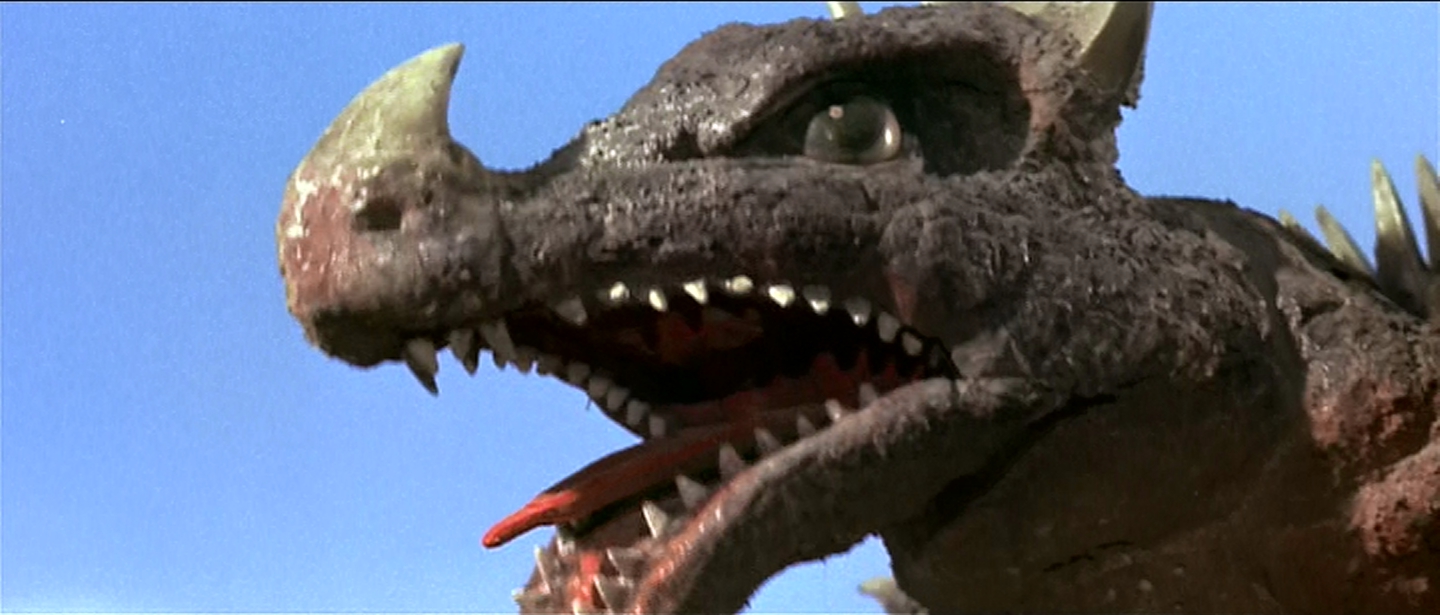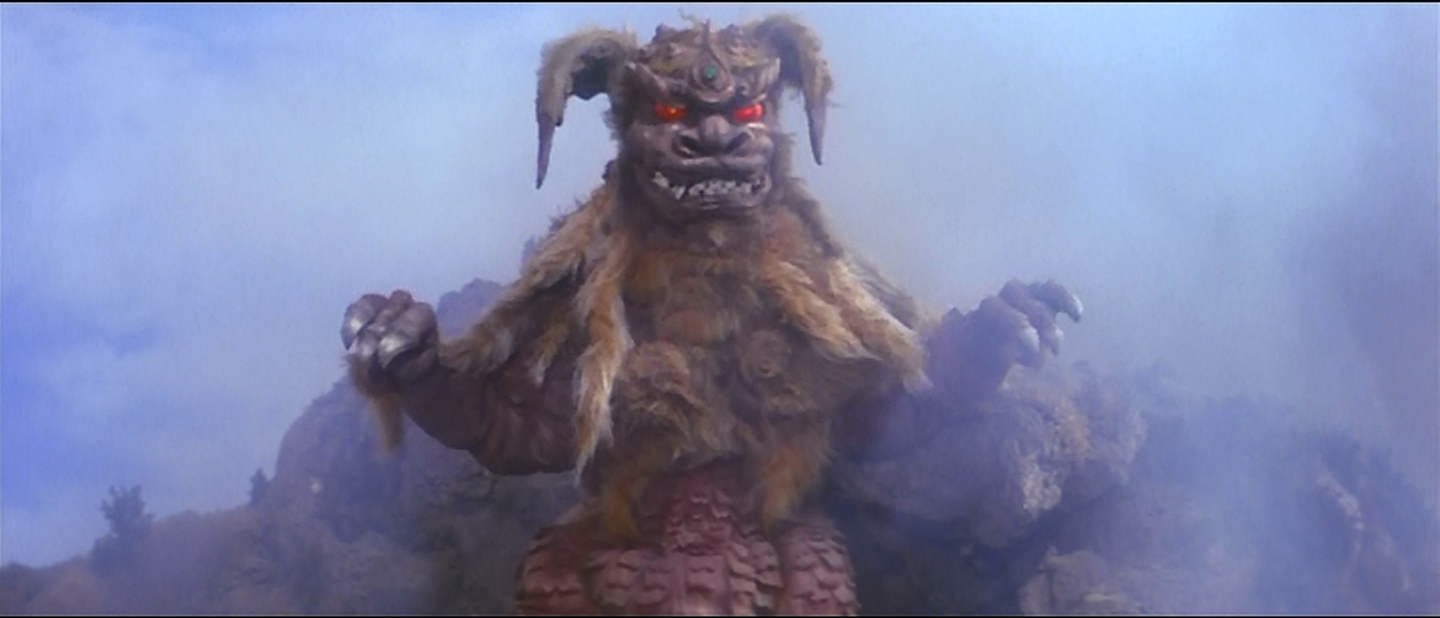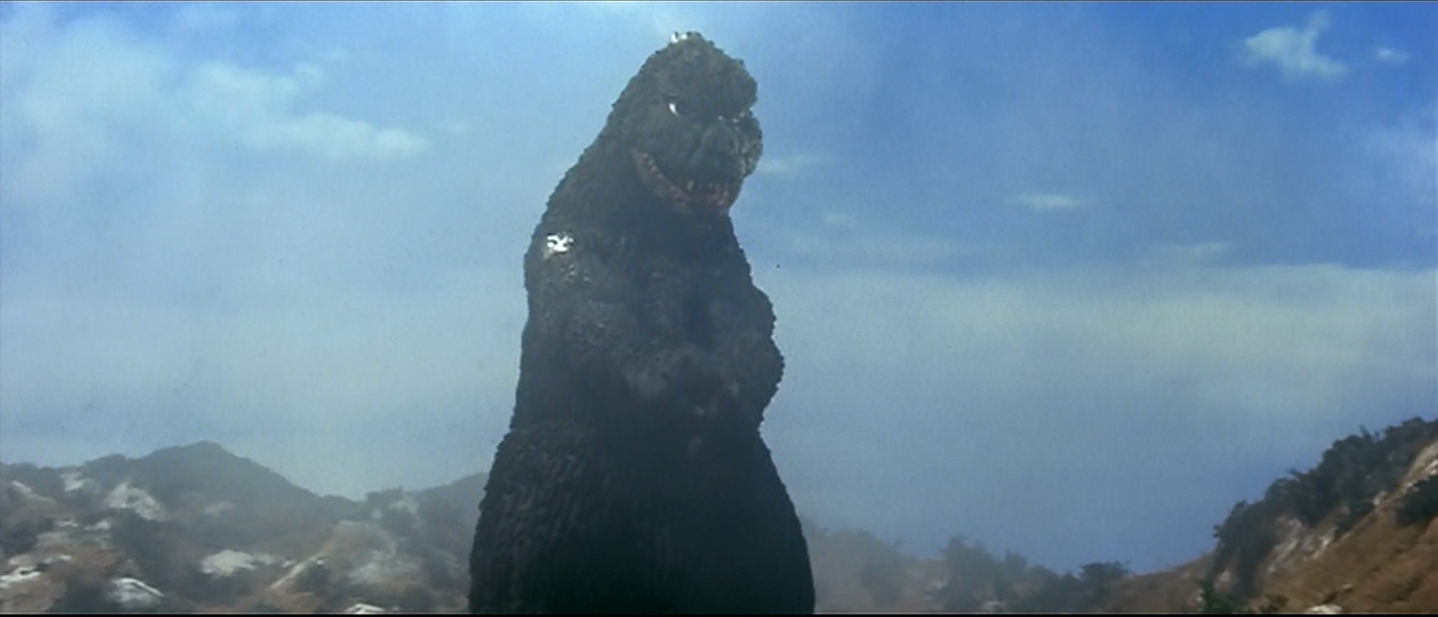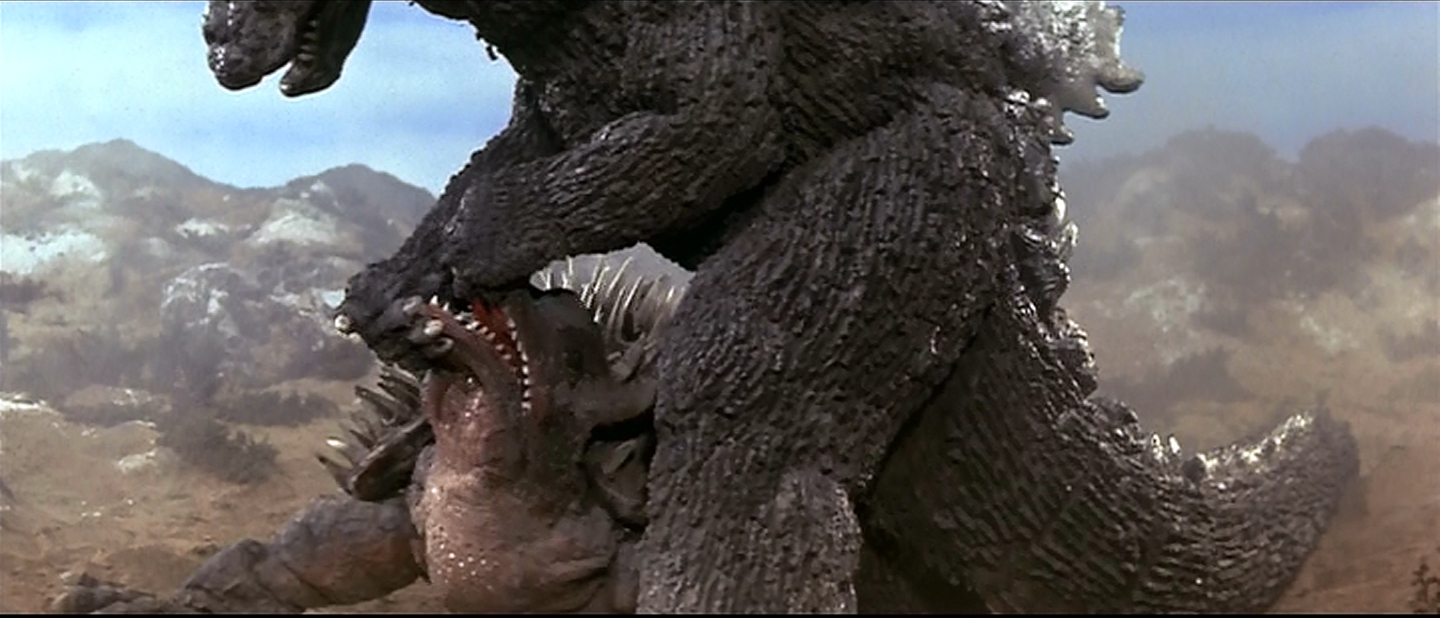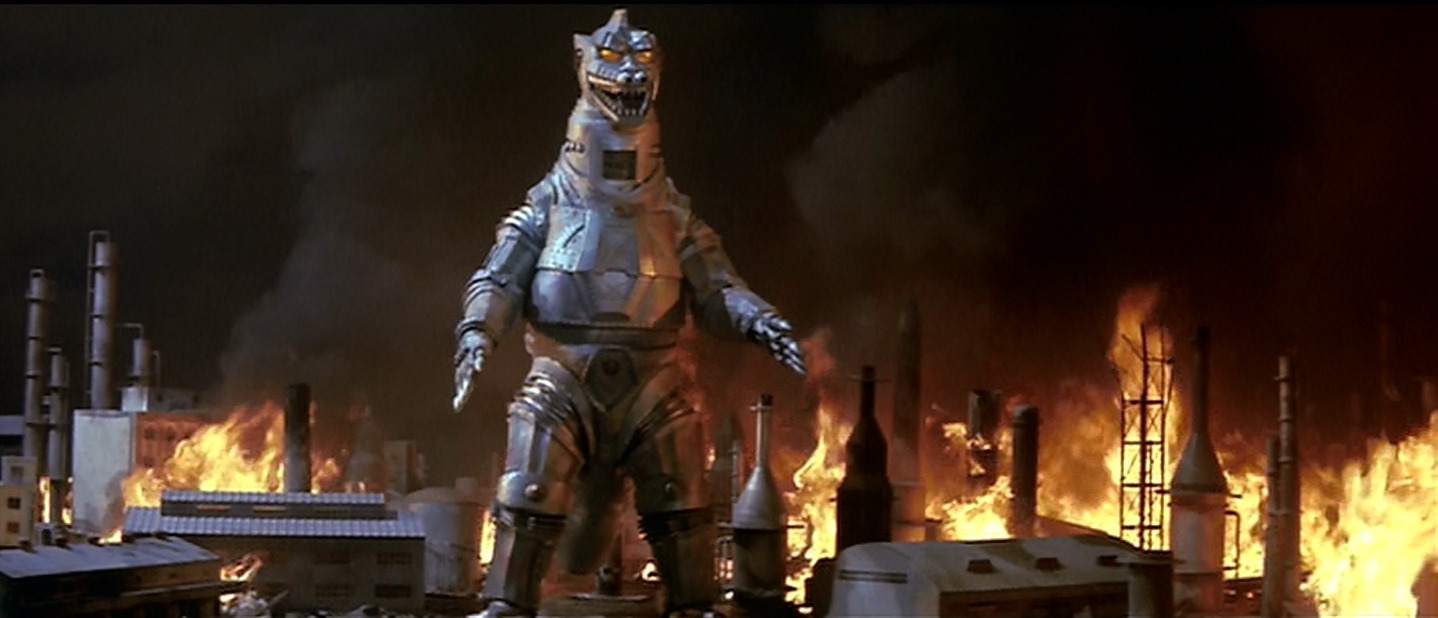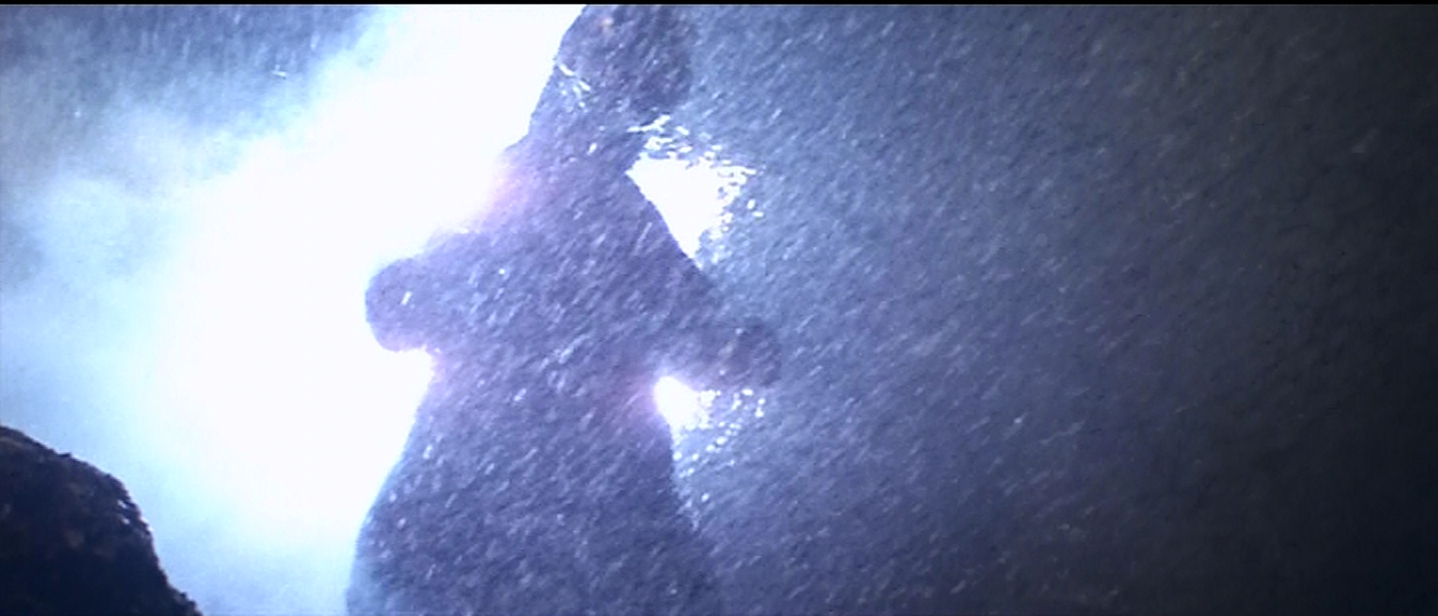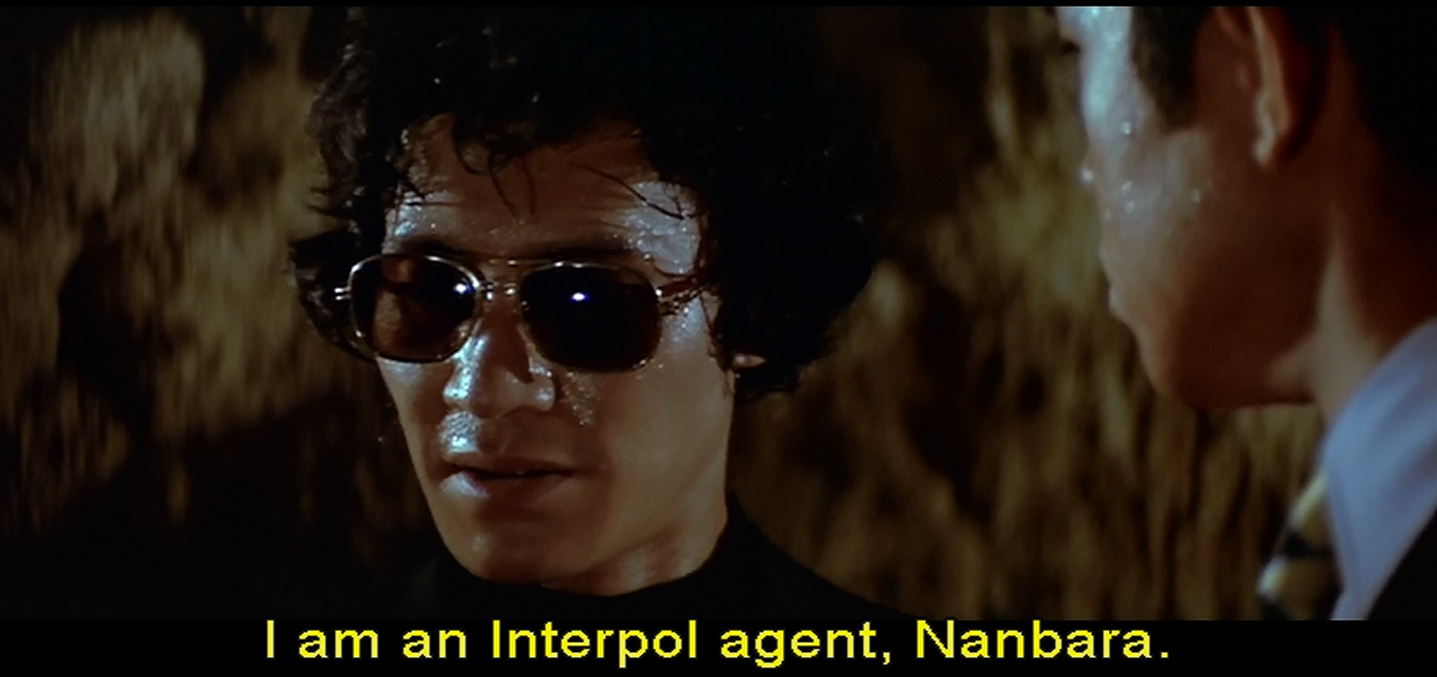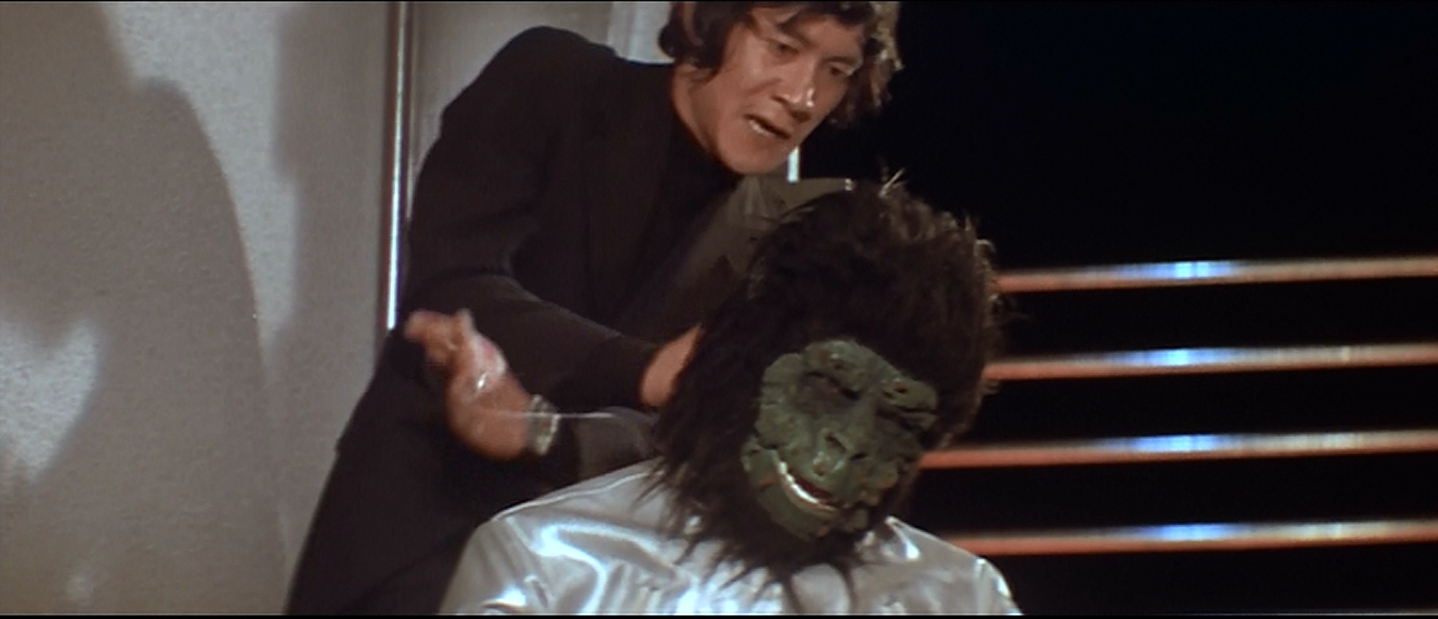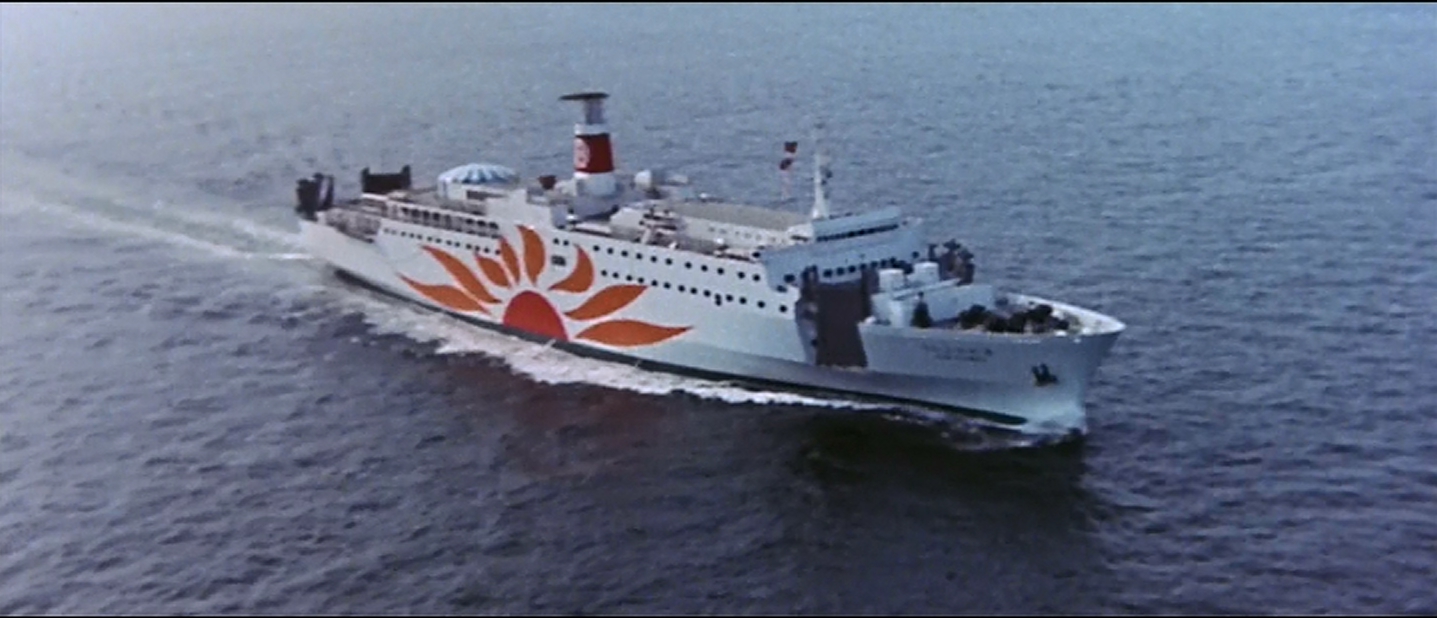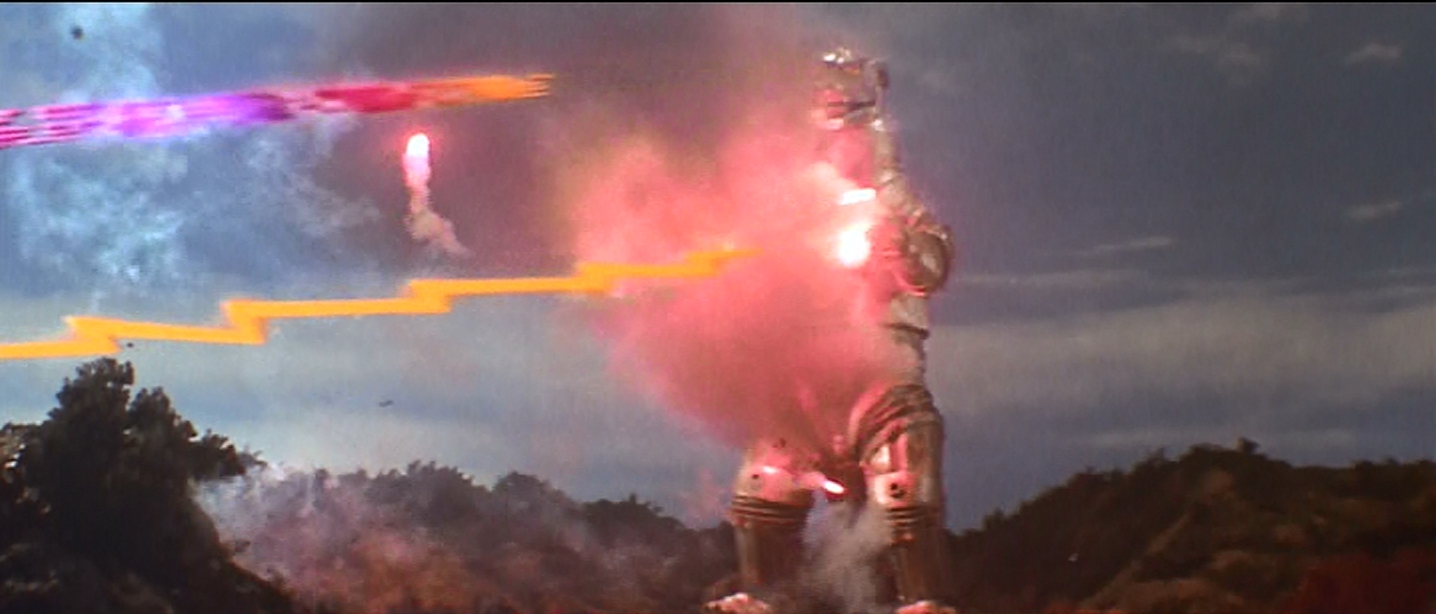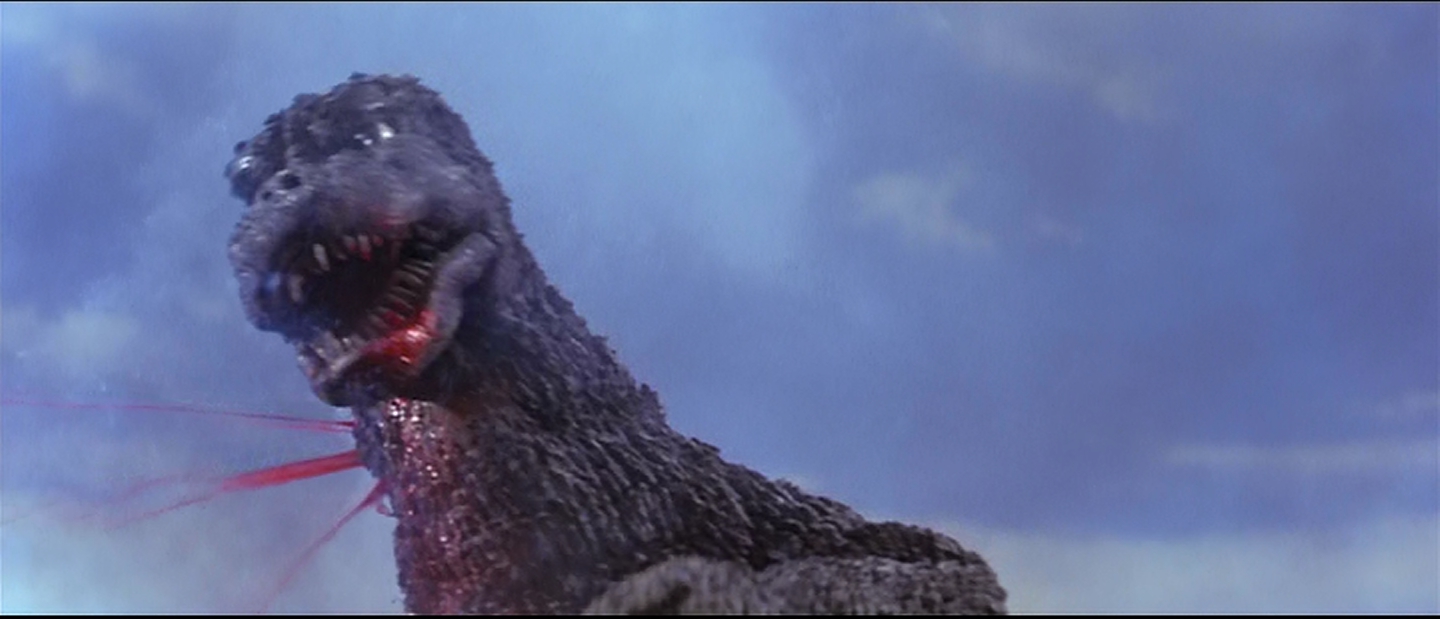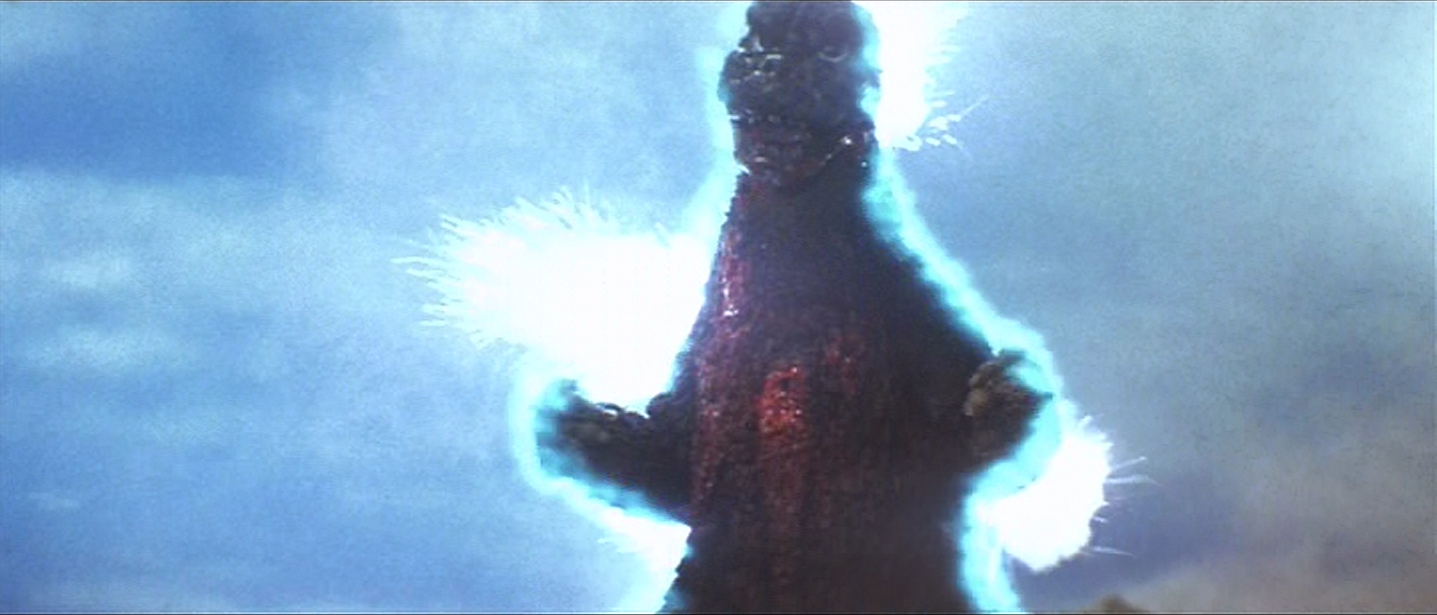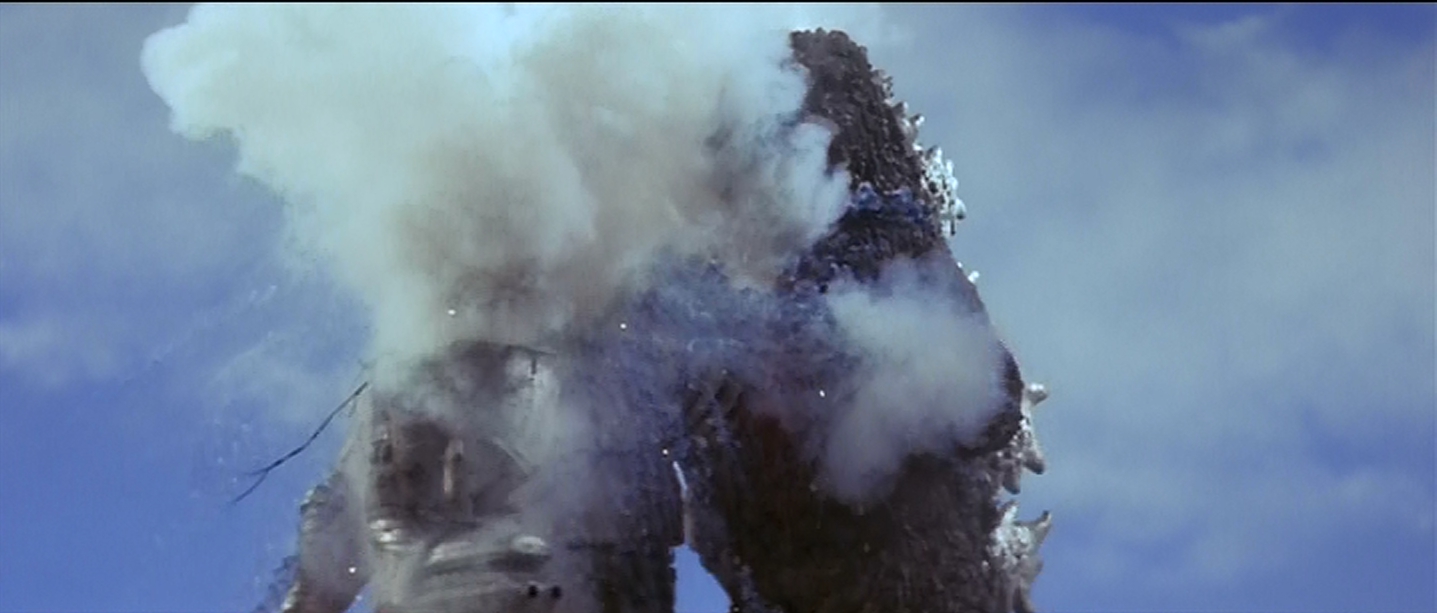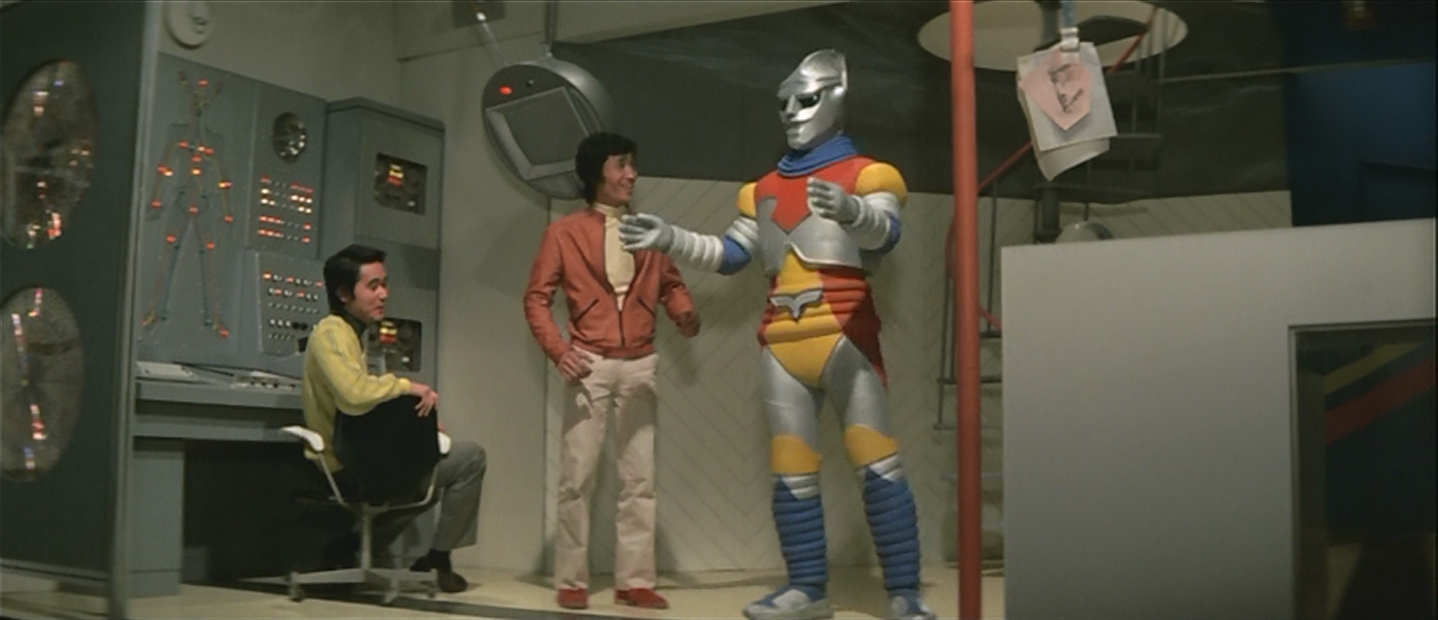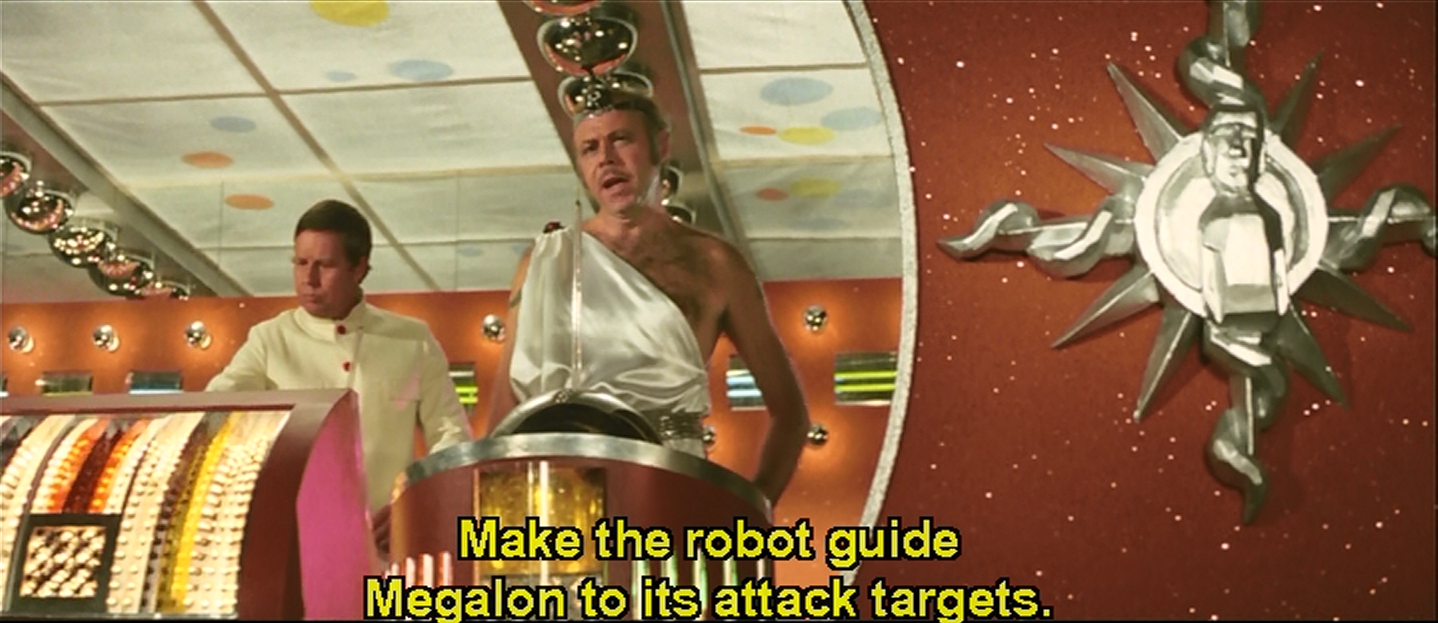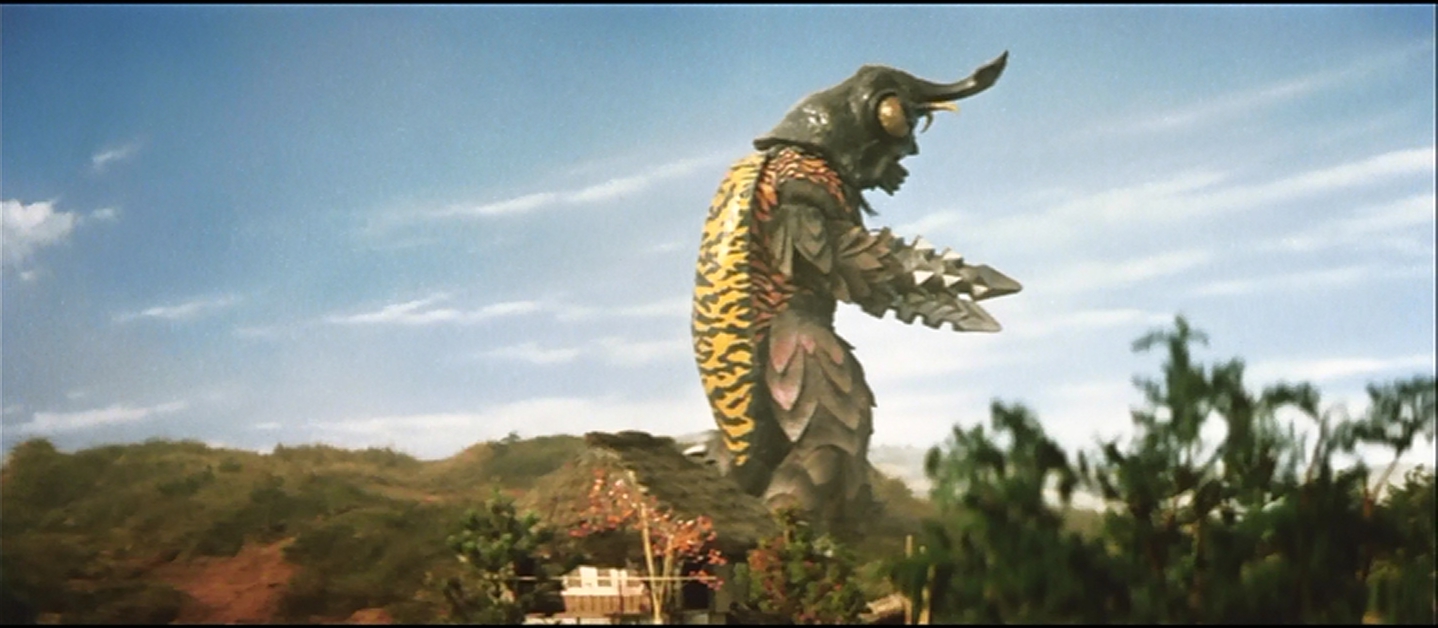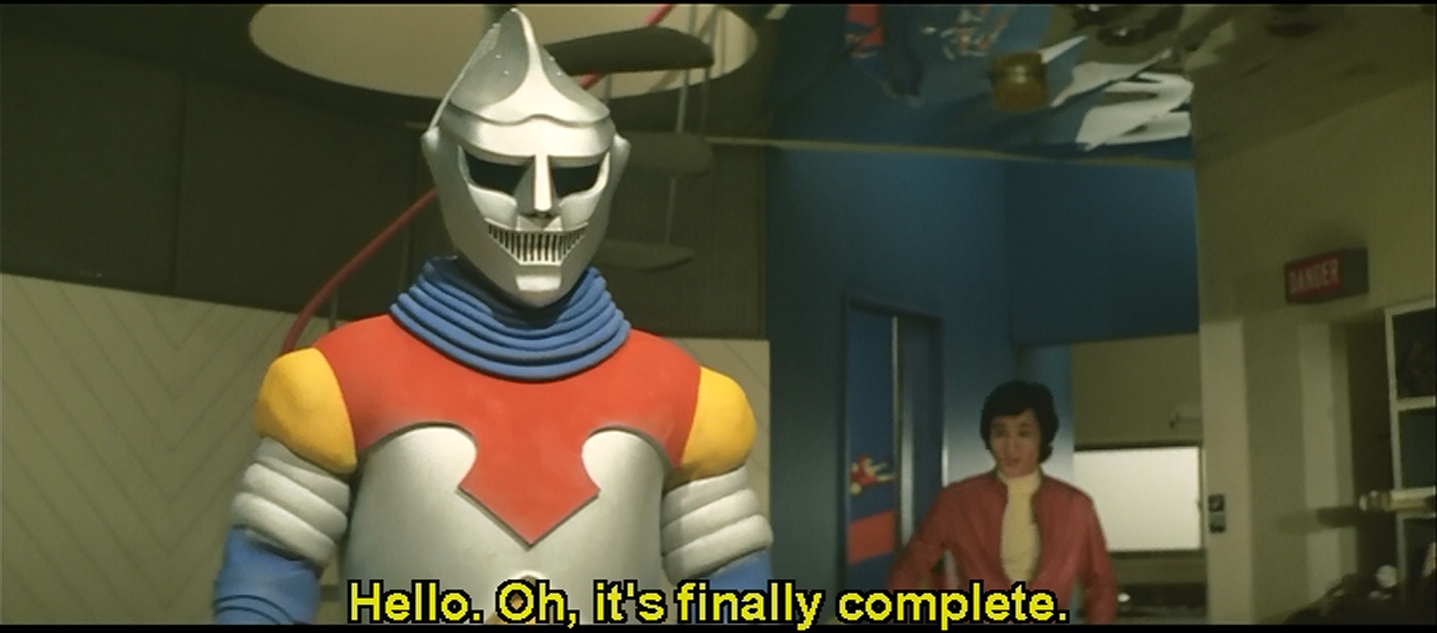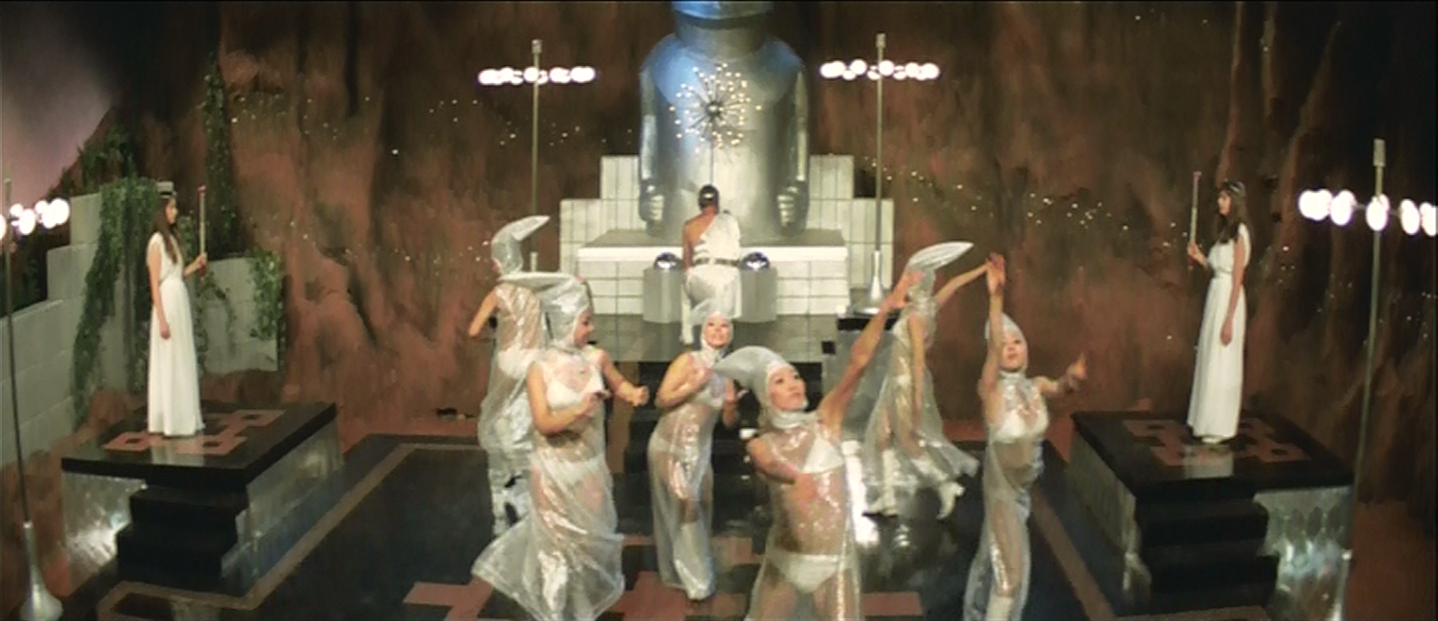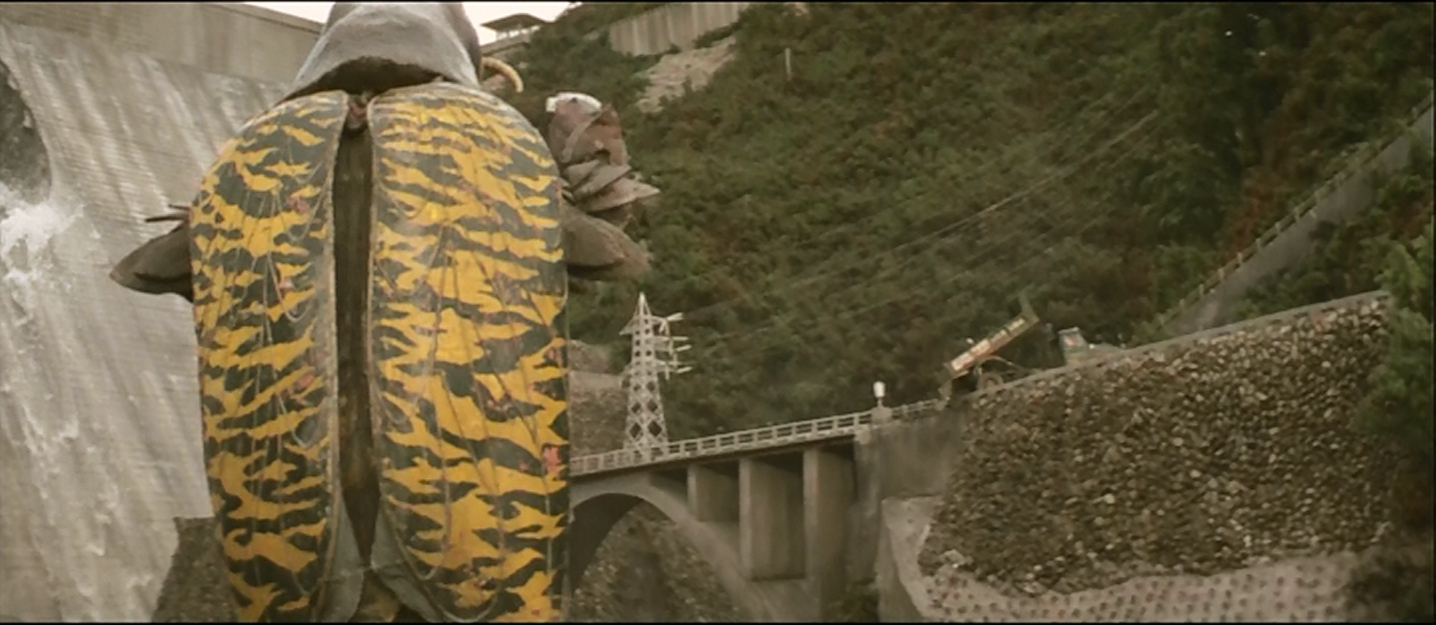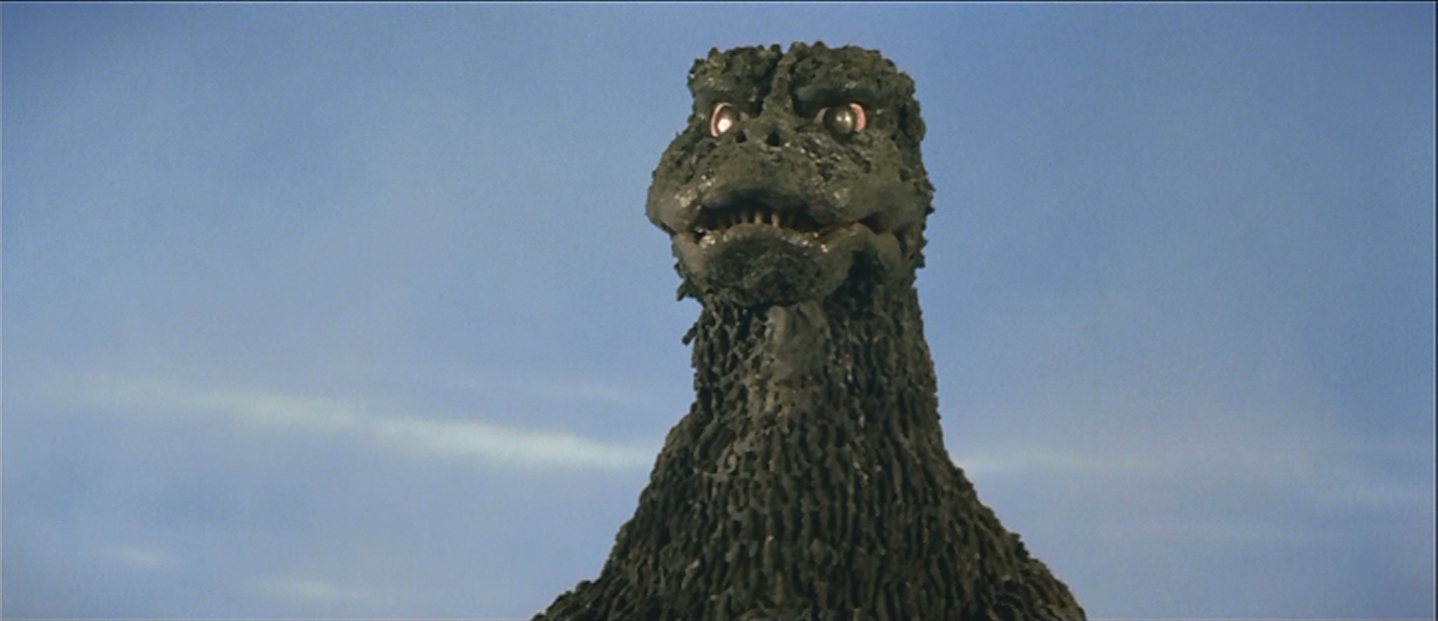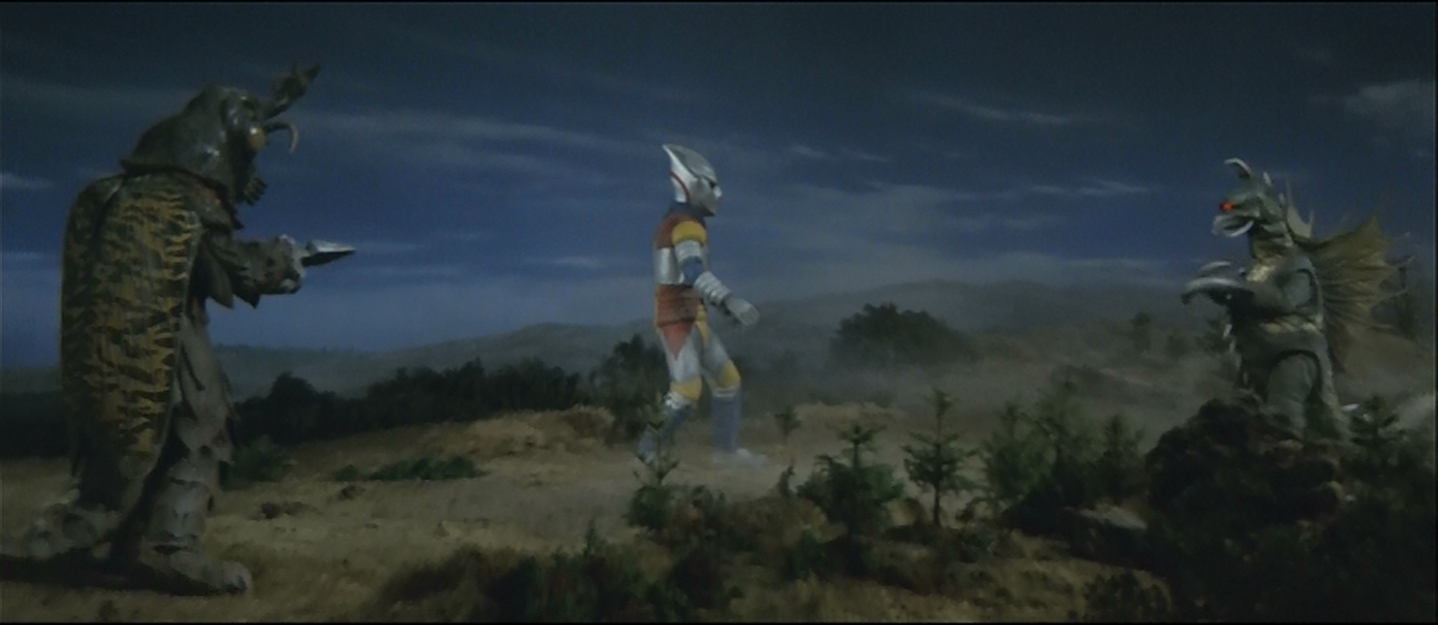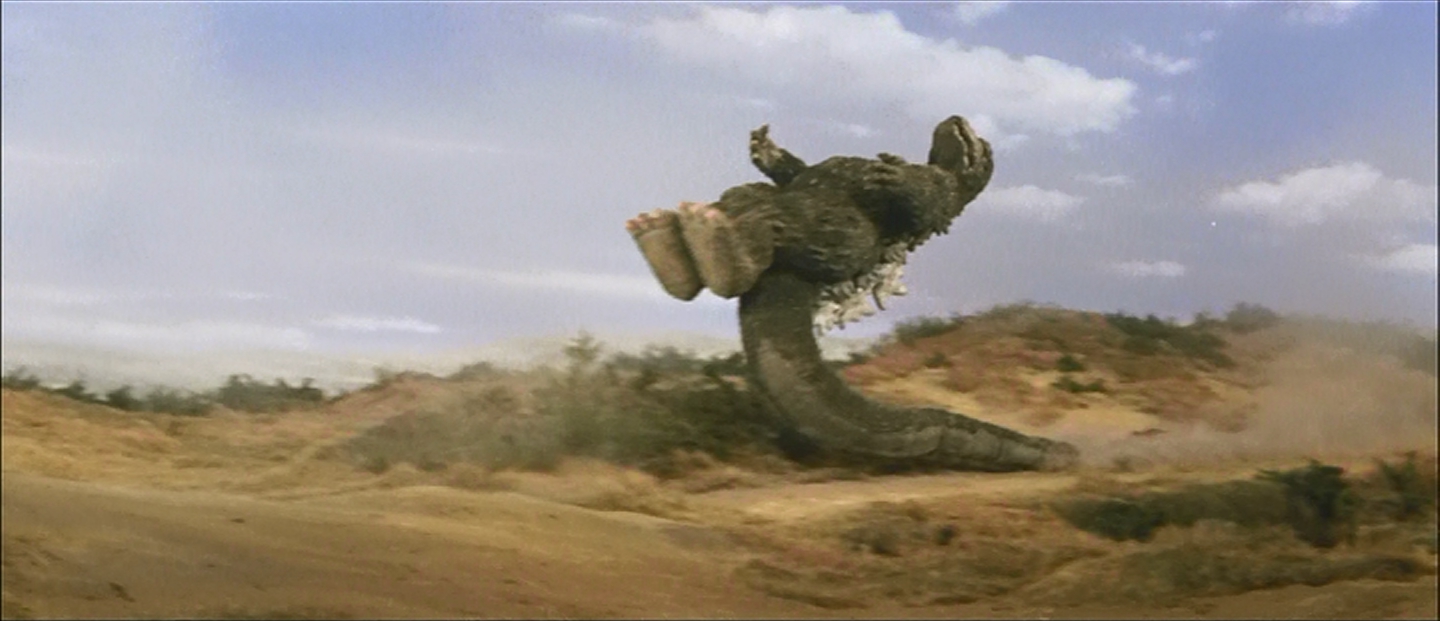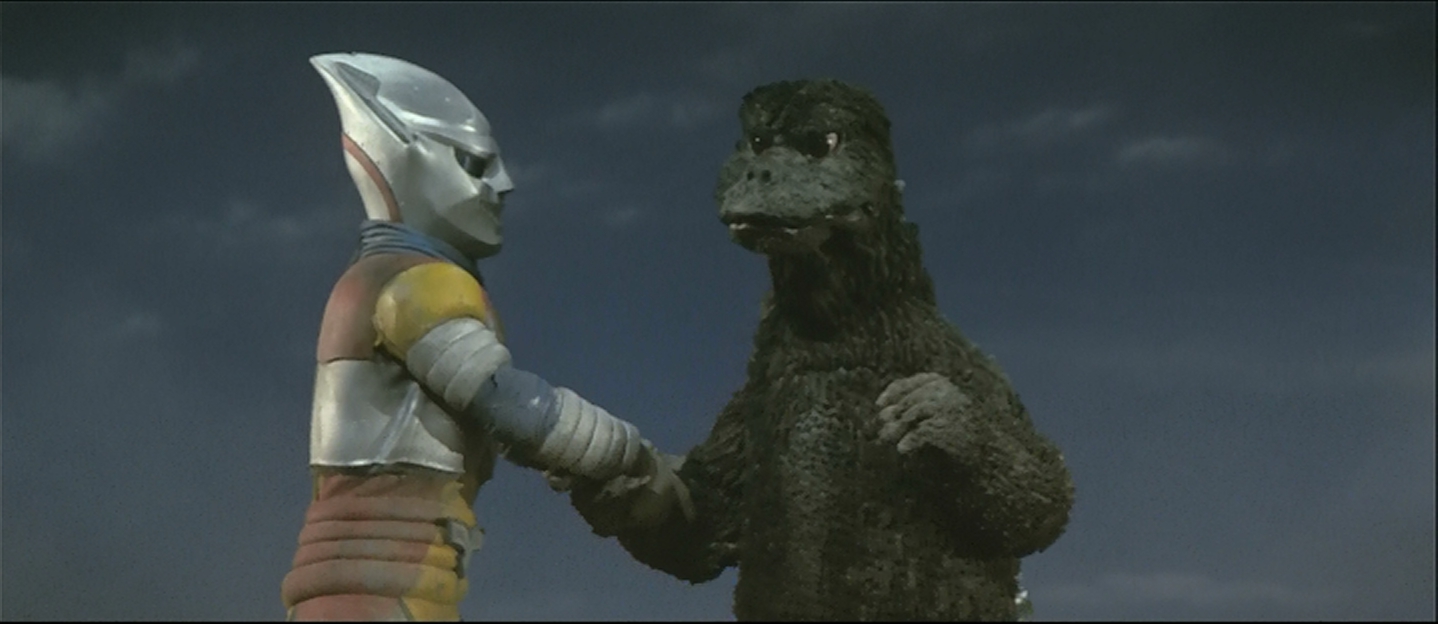The film opens with a sequence reshowing the monster action from Godzilla vs Mechagodzilla, which conveniently leaves out Anguirus and King Caesar. But it does give us an exciting open, and an idea of how threatening Mechagodzilla is. Although they were of minimal use, Godzilla had King Caesar and Anguirus as allies in the previous film. This time, Mechagodzilla has an ally, Titanosaurus, so it's going to be a tough fight for Godzilla.
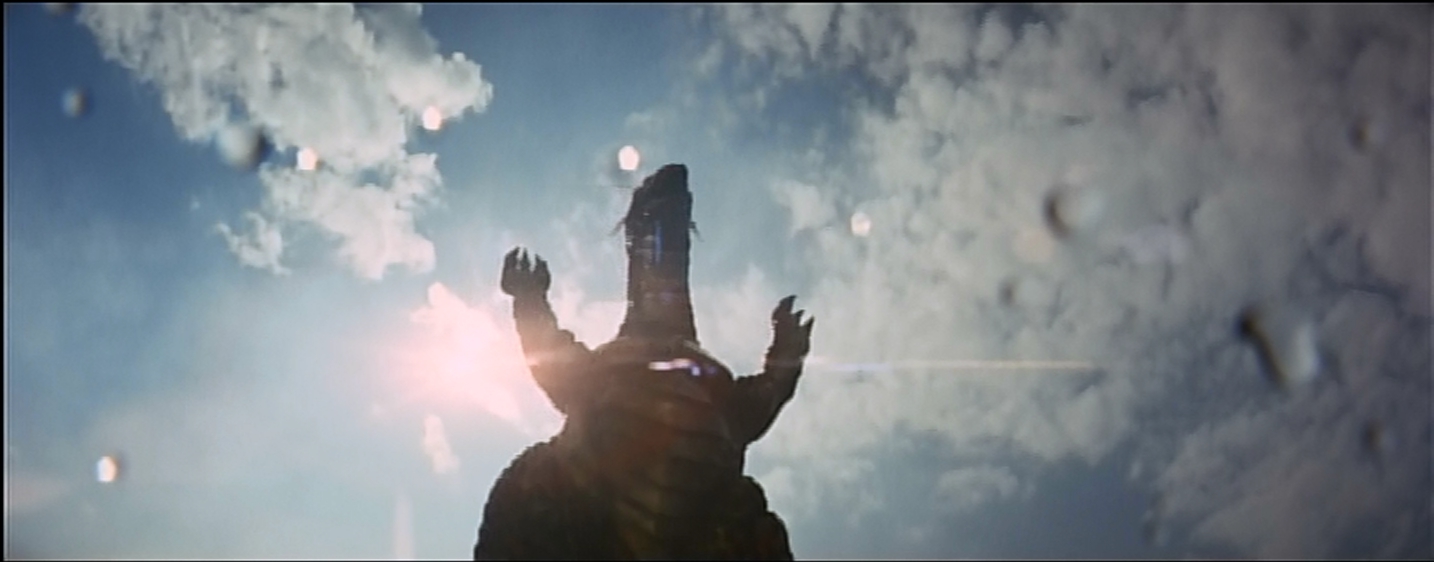
There's a bit of weirdness to the film, though. When the submarine that's looking for bits of Mechagodzilla goes down, its last transmission talks about seeing a dinosaur. Of course, the guys on land can't believe it. This is the same Japan that has been attacked by two Godzillas, Mothra, Anguirus, Rodan, and host of other gigantic creatures, and this is referenced in the film. But one more dinosaur, woooah, that's crazy talk!
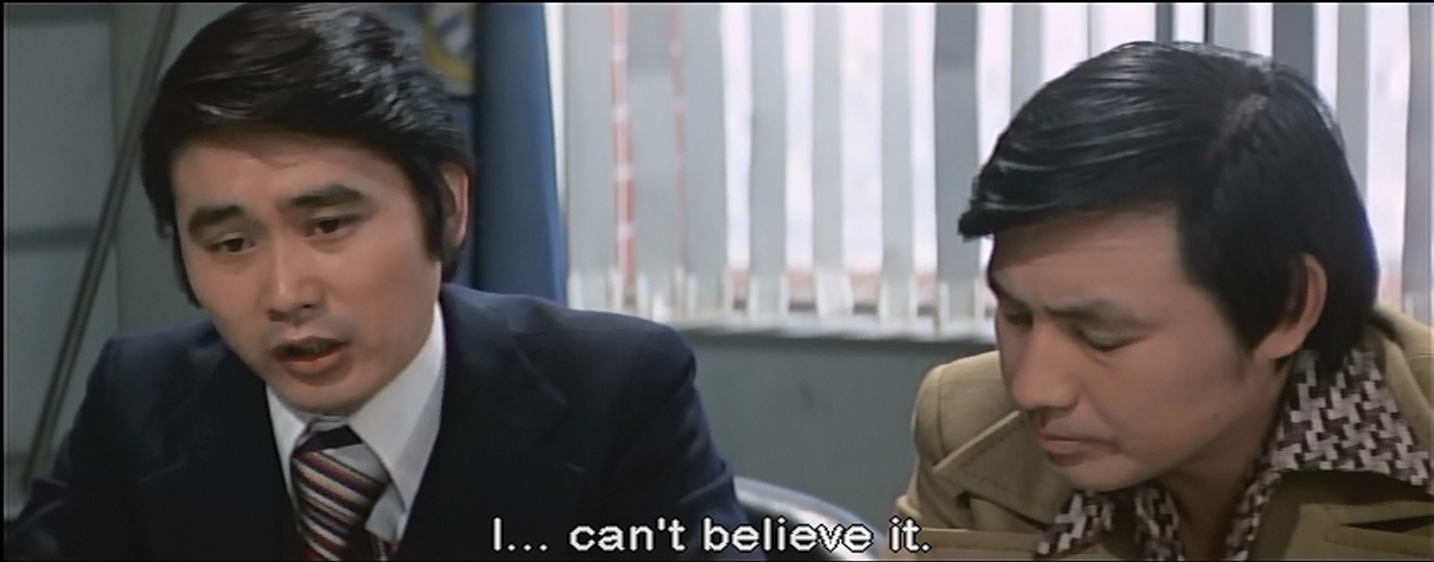
Mechagodzilla is an alien weapon, so the Third Planet from the Black Hole aliens from the previous film are behind it. Their plan seems to be to remake Tokyo, which is shown to us with a beautiful pan. In some ways, this feels like a kiss to the city that Godzilla is constantly flattening. Remembering how small it was twenty years ago when Godzilla first crushed it, the explosive growth of Tokyo is amazing. But this is followed by a smog shot. But the Black Hole aliens once again need the ingenuity of an earthling, this time, Dr. Mafune.
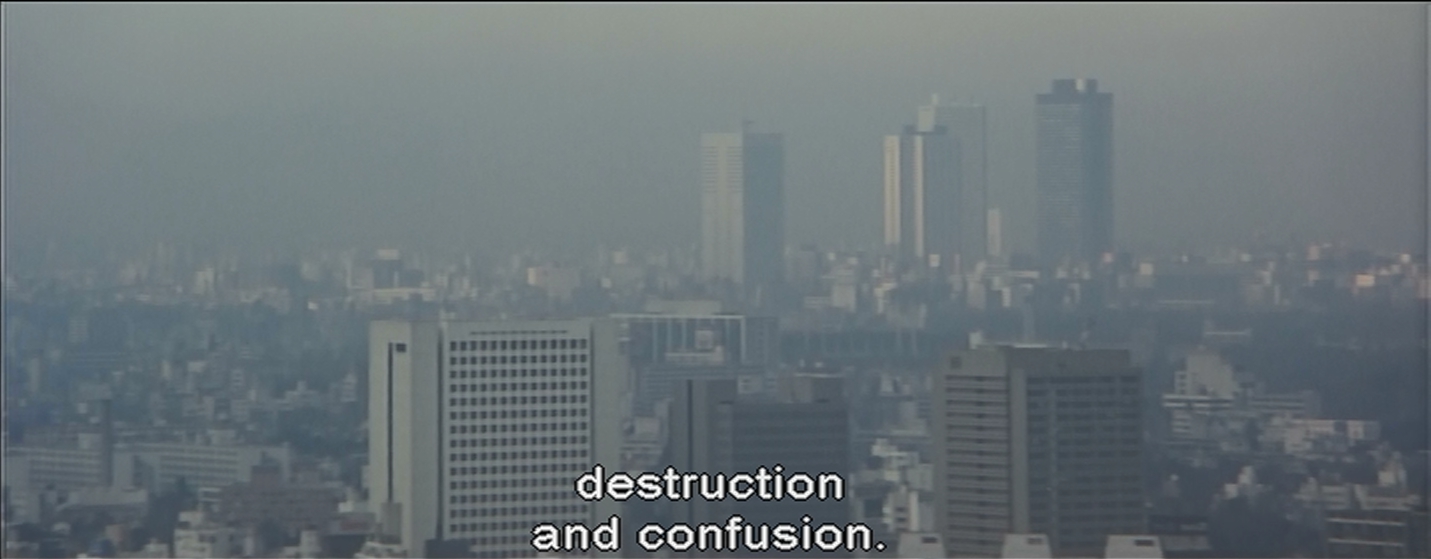
Dr. Mafune has been working on a way to control animals. Fifteen years ago, his experiments were inconclusive, but he discovered a dinosaur, told the world he could control it, and his colleagues beat the crap out of him. Seriously there's a photo of him being assaulted. How this could ever have gone wrong I don't know. Japanese adacemia must be a lot tougher than American academia. But this is another thread in the monster control idea, which was a theme in Son of Godzilla, and Ebirah, Horror of the Deep. The space roaches from Godzilla vs Gigan and the Seatopians from Godzilla vs Megalon both have perfect control over their monsters. But the Black Hole aliens do not, relying on Dr. Mafune's invention.
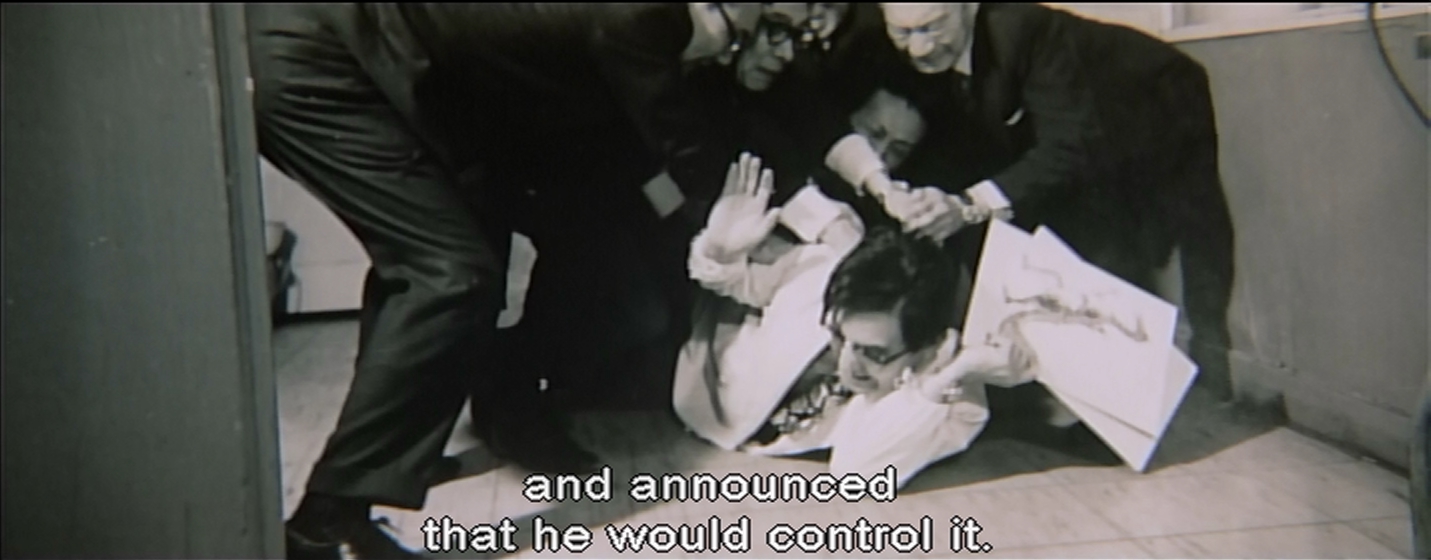
Katsura Mafune is in many ways a stock character; the scientist's daughter like in Emiki Yamane in Godzilla, and at the same time an evil alien like Miss Namikawa from Invasion of Astro Monster. She is also a cyborg. The Black Hole Aliens gain Dr. Mafune's trust by bringing her back from the dead. Her half-machine state may be a nod to Westworld which was released in 1973, or perhaps the three Six Million Dollar Man TV films, produced the same year. But Katsura has a lot of power and agency in the film, similar to the Kilaaks from Destroy All Monsters or Chakiko from Gamera vs Zigra. And although love conquers all, the love is offered to her, rather than Katsura being the one to offer her love. Although she sacrifices herself, she does so for Ichinose, who says he loves her even though she is a cyborg. She never has to apologize for what she has done. This is a significant step forward for the agency of women characters in the Godzilla films, an trend that will continue when the franchise is revived.
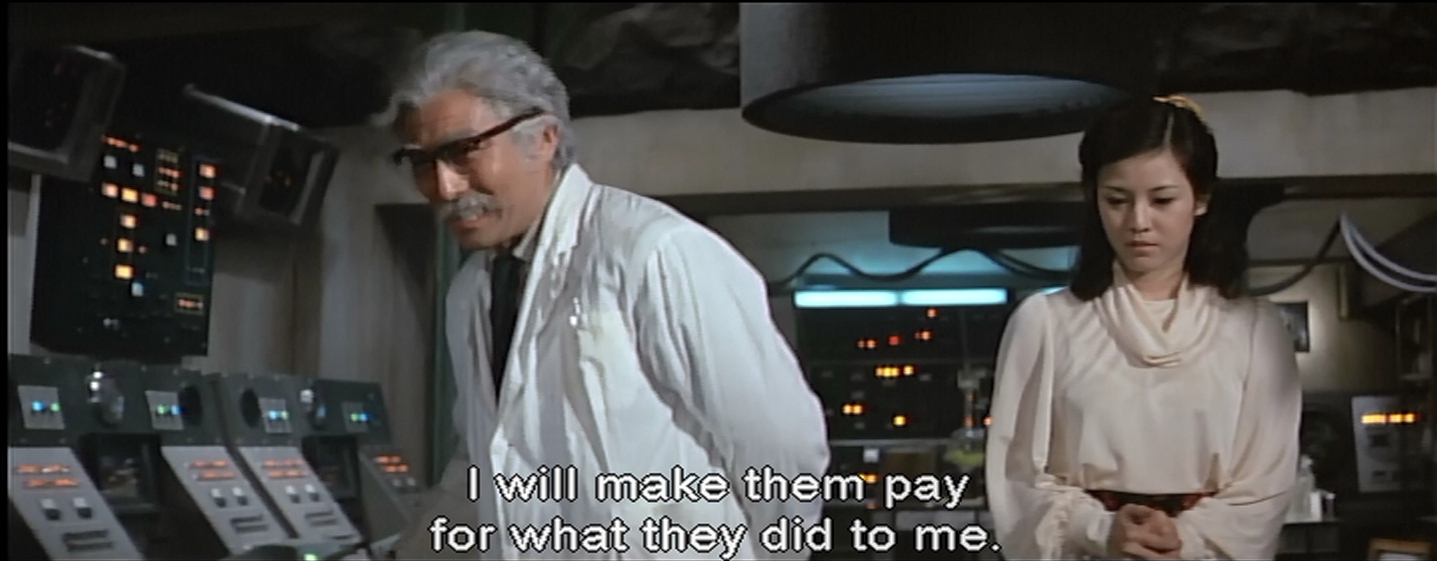
Although we have met Mechagodzilla before, Titanosaurus is new. He's essentially just a dinosaur, albeit one that is being controlled. He has no breath weapon, but he has a tail fin that can create strong winds like those that Rodan propduces when he flies over. The design is pleasing, detailed and natural-looking. Titanosaurus towers over Godzilla, although his head does tend to bobble a bit when he walks. In a parallel with Katsura, he is a gentle creature that is being forced to do the aliens' bidding.
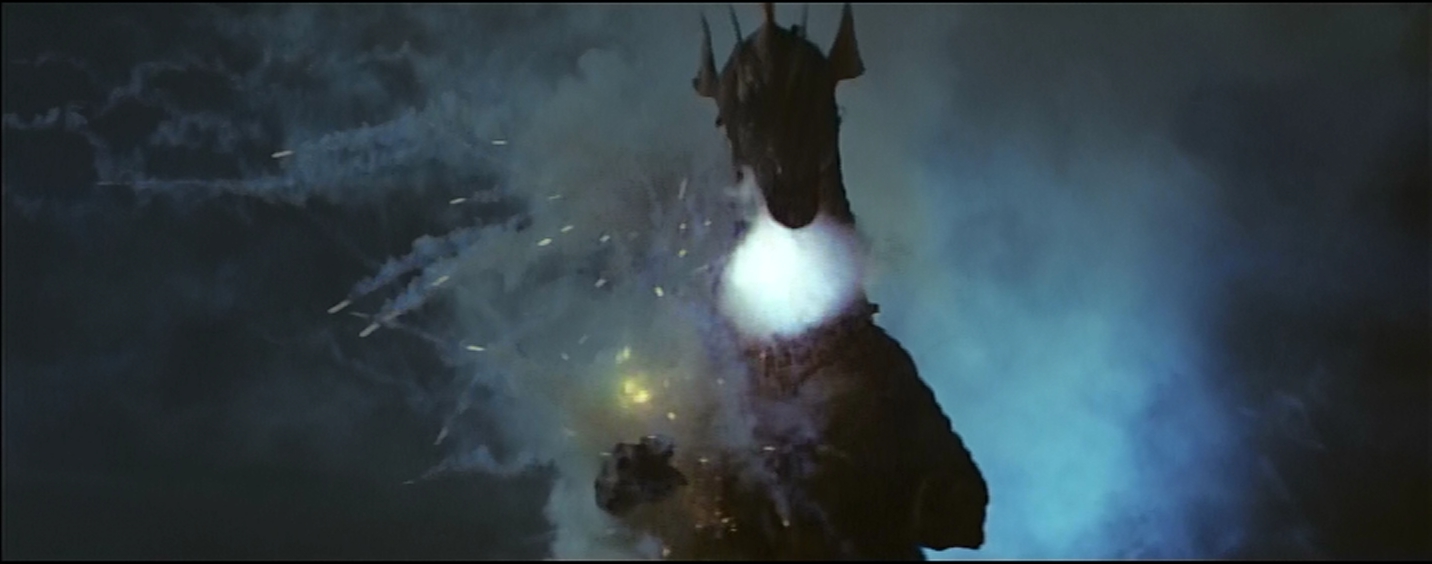
As in all Honda films, the military is there to provide a show, but can't do anything to the monster. Godzilla's entrance is something special. Without fanfare, he appears as a dark silhouette behind a city scape. He is almost unrecognizeable, but the blast of his atomic breath is unmistakable. The camera zooms in, and the light slowly reveals the face of Godzilla, and the slow Ifukube march plays. It's a moment we expect, and one Honda wanted to make memorable.
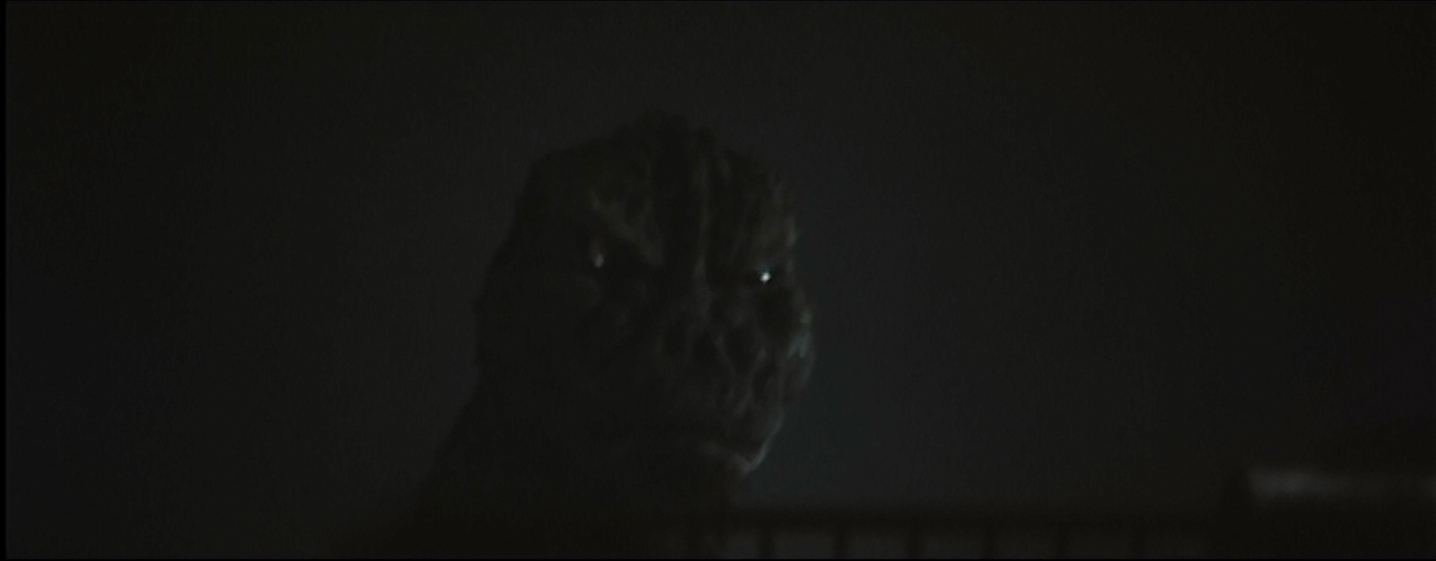
And then it's on: Godzilla vs Titanosaurus.
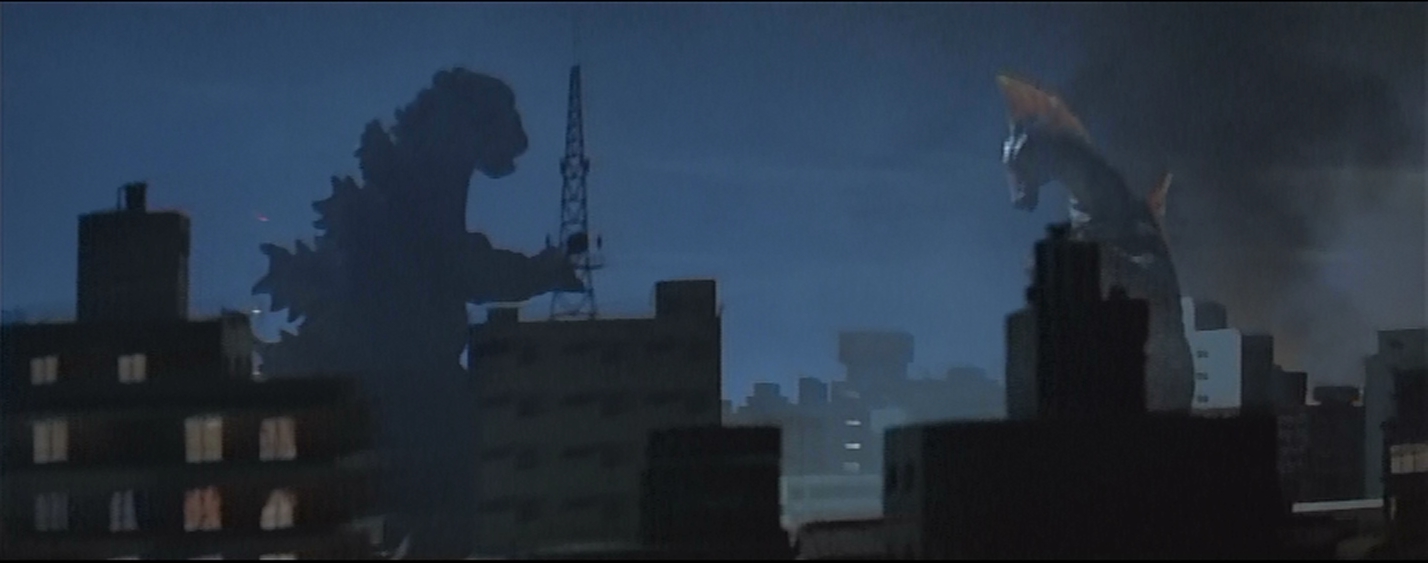
Without Katsura's constant direction, however, Titanosaurus is confused, and a weak fighter. So the human plot has to find a way to distupt the communications between Katsura and Titanosaurus.
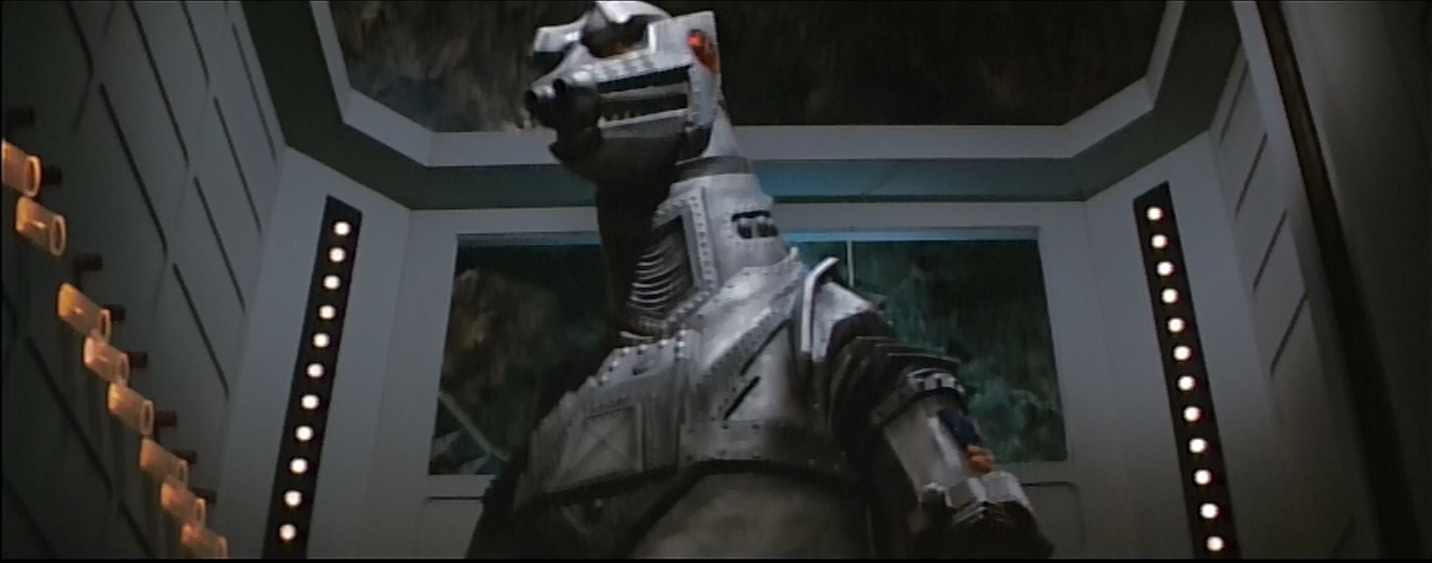
Mechagodzilla is looking a bit the worse for wear, which is understandable, since it got blown up last movie. Then the Black Hole Aliens install the control to Mechagodzilla into Katsura. Because they're space assholes. Once this is done, Katsura is dressed in the finest sparkly silver, so she is visually aligned with the aliens.
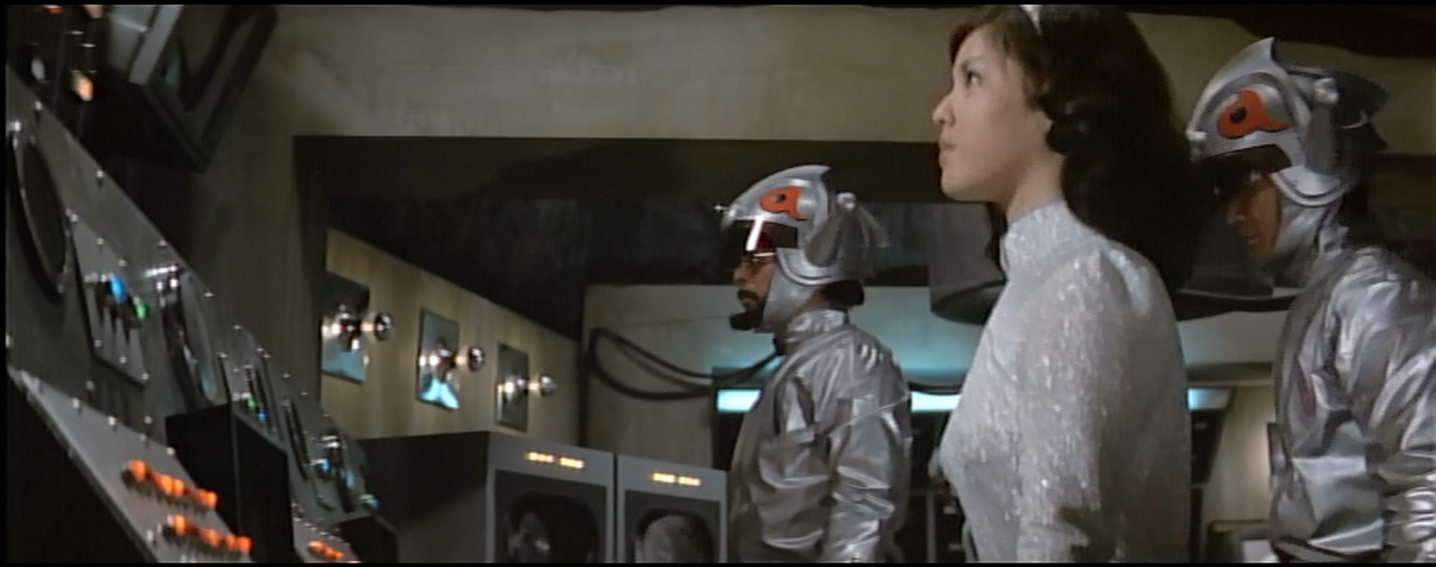
Katsura's eyes blaze green when she's sending commands to Mechagodzilla. When Mechagodzilla and Titanosaurus go to town, it's pretty spectacular. The explosions are huge. One is so large that is breaks the platform on which the miniature set is built. Obviously, SPFX director Teruyoshi Nakano is having a great time blowing stuff up.
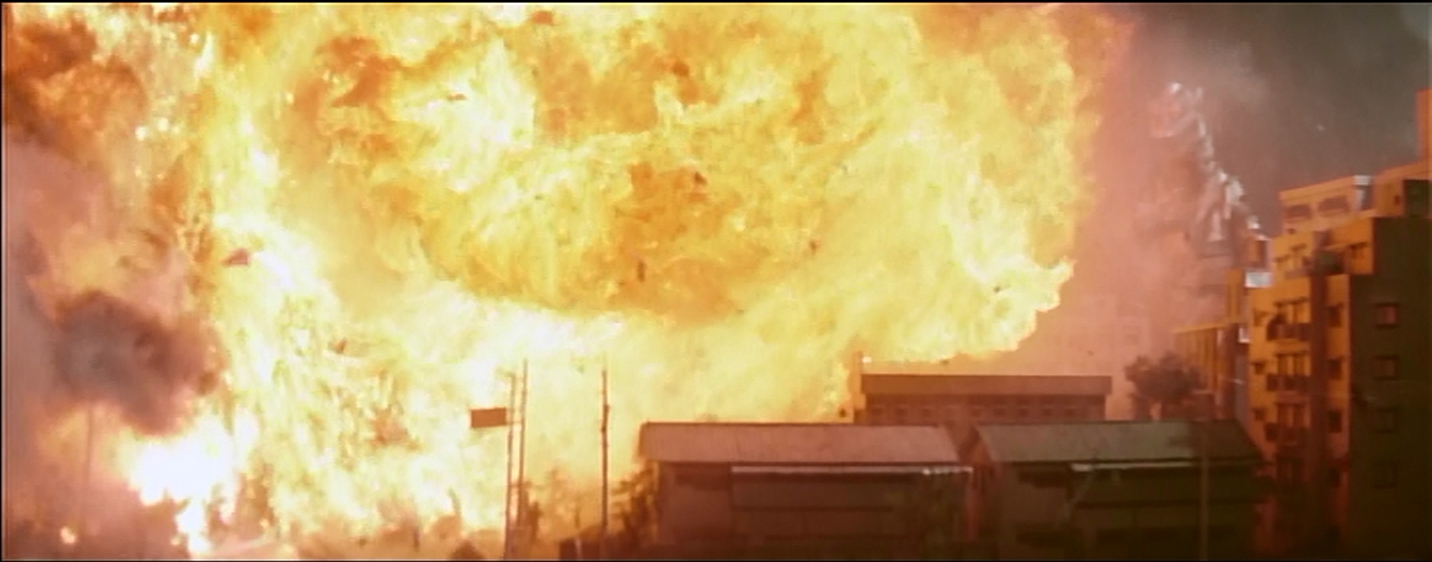
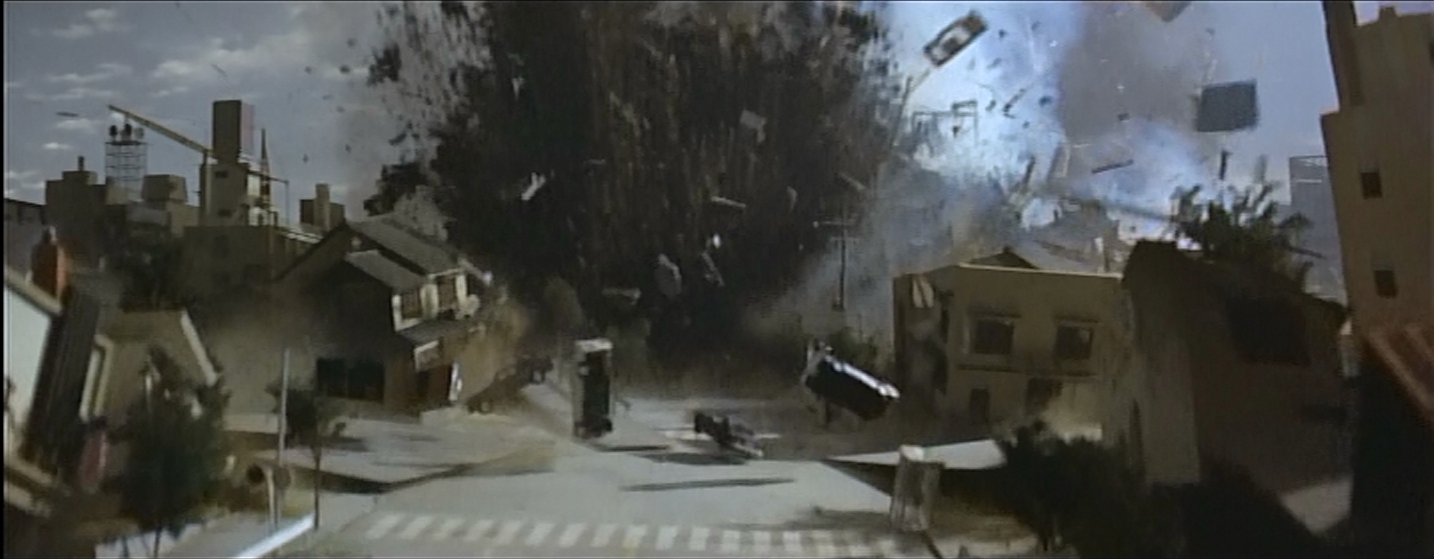
In an interesting visual innovation, Mechagodzilla performs a gesture before it can fire off its deadly revolving missiles. This is a simple way to increase the dramatic tension, since it signals the use of the deadly missiles.
The final twenty minues of the film are a very good monster fight. It tells a story, and the reversals come from the plot, which is what sets this film apart from Godzilla vs Megalon, where the reversals were so frequent they were meaningless. At first, Mechagodzilla and Titanosaurus have the upper hand (claw?), but a reprieve comes when the military distracts Titanosaurus.
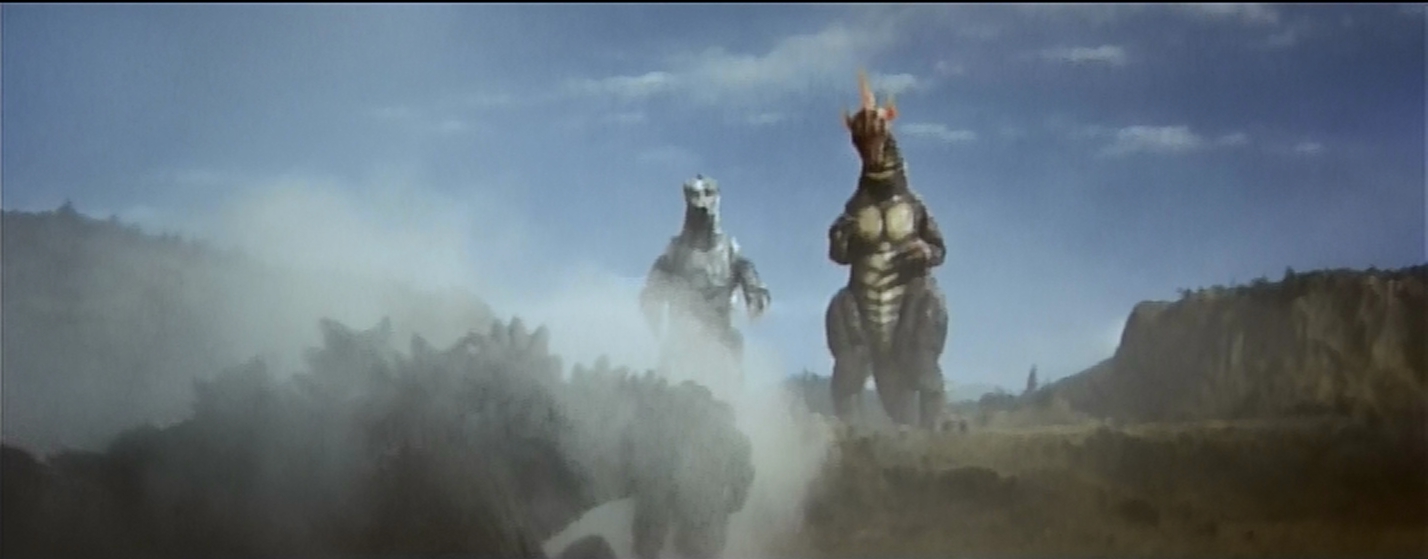
That doesn't last long. Titanosaurus beats on Godzilla, and Mechagodzilla fires revolving missiles. Godzilla, in a scene that is repeated a few times in future films, exhales smoke, and falls over. The evil pair then bury Godzilla, and Titanosaurus jumps on the burial spot. The humans intervene again, by sending scrambling the signal to Titanosaurus. This causes the gently dinosaur to go spasmotically nuts. With Titanosaurus out of the fight, Godzilla is able to gain his feet.
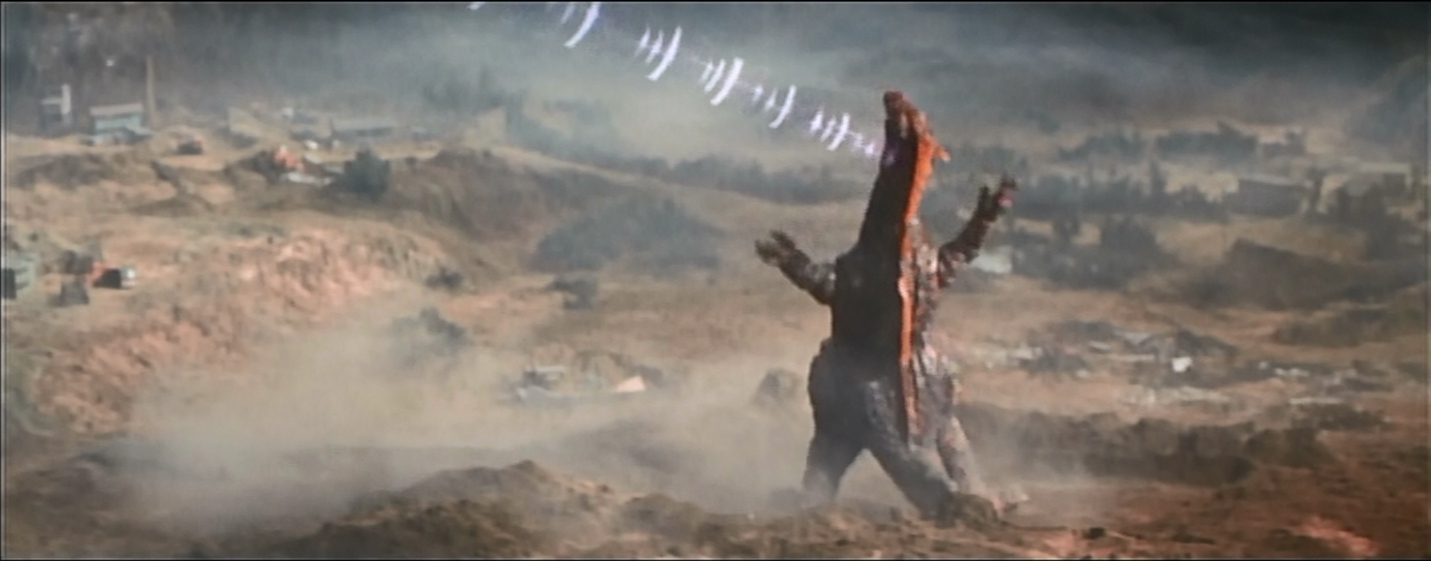
In a spectacular sequence, Godzilla runs towards Mechagodzilla, while the robot is unloading everything it has at him. It's astonishing, with so many explosions that Godzilla is often obscured. Godzilla staggers, but never stops coming. Even when the suit catches fire.
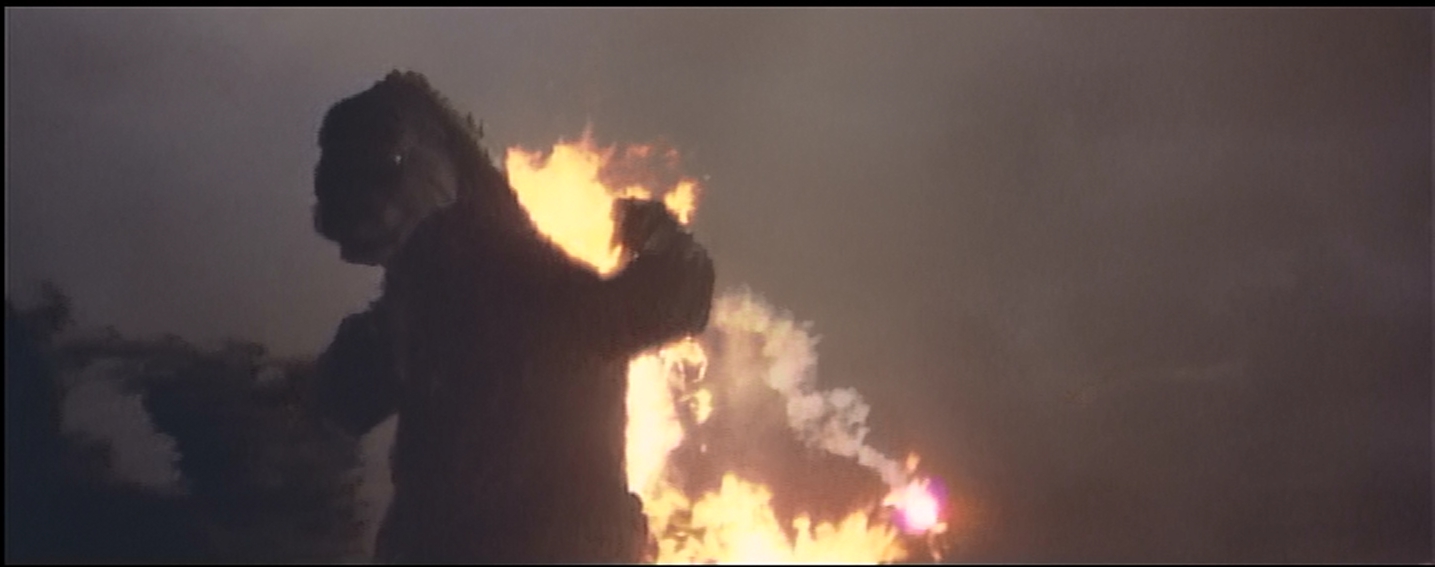
The emotional climax parallels the action climax, as Katsura discovers her humanity around the time Godzilla rips Mechagodzilla's head off. Remembering last time, the Black Hole Aliens have installed a beam emitter in Mechagodzilla's backup head. When Godzilla rips the head off, he is slammed with an extremely powerful beam weapon.
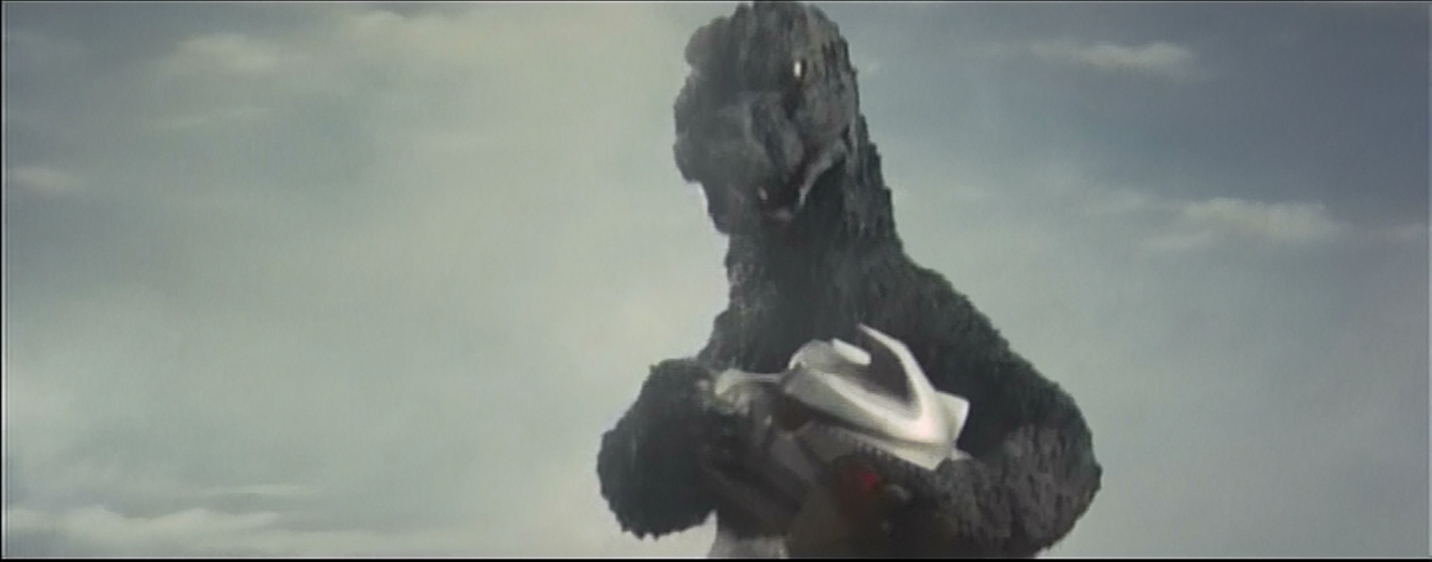
But Katsura kills herself, and Mechagodzilla loses all motive function. Some UFOs try to escape, but Godzilla's atomic hear tay takes care of that. And Titanosaurus. The closing is Godzilla wading out into the sea, a variation of Ifukube's "Prayer for Peace" playing. And that's the last we see of him for eight long years.
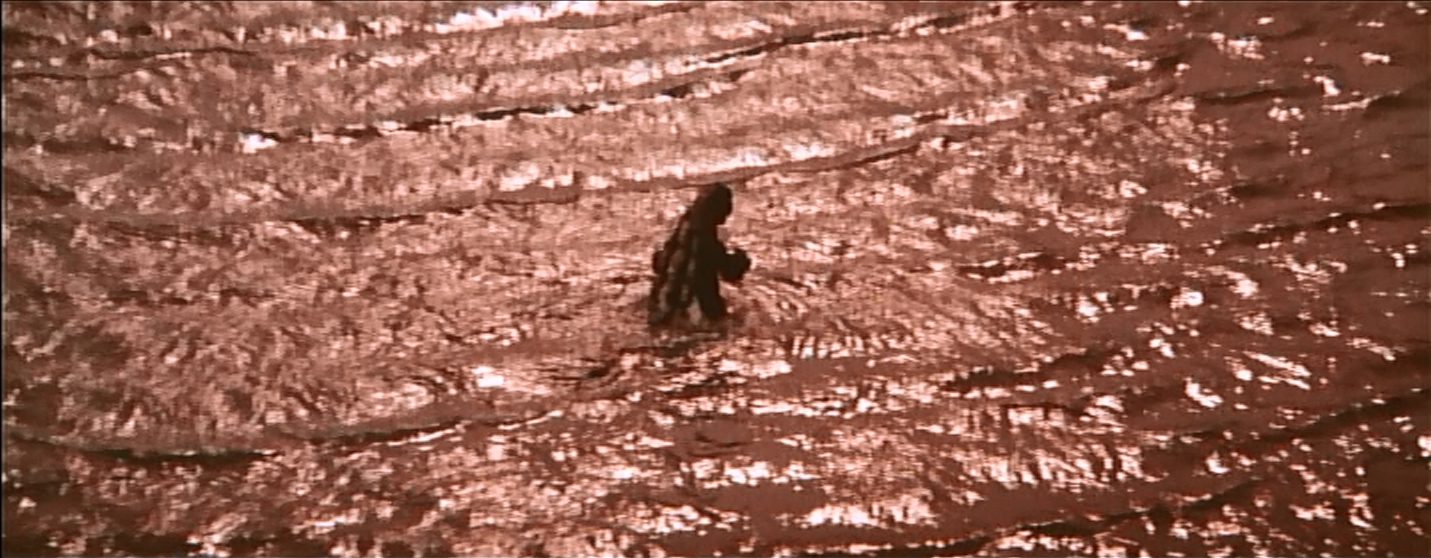
Terror of Mechagodzilla was Godzilla's least attended film, but it stands up well, especally in the era of the simple Jun Fukuda films. The psychological tension of the character of Katsura, and Godzilla having to square off against two difficult opponents, makes this an exciting and interesting film. Ishiro Honda was an excellent director, and while this is not his best, it is far from the worst Godzilla film made.
Next week, the return of the Big Ape!
